
ISSUE 202 | March 2024 Sealing success in PNG first 32 A welding master on wheels 48 ENHANCING WATER SECURITY WITH FITZROY TO GLADSTONE PIPELINE – page 16 CO2 pipeline testing triumph 24 Powering AHEAD
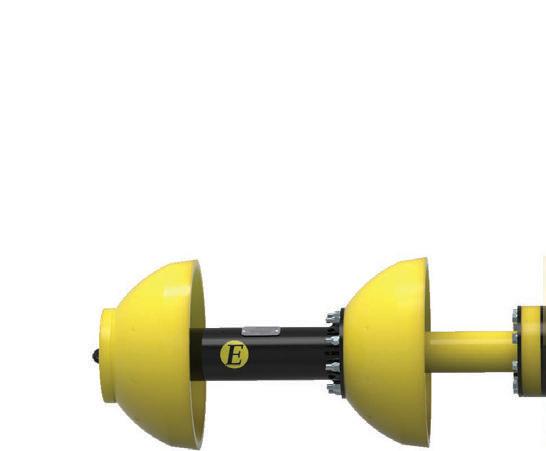







ALL ABOARD THE PIG TRAIN › Line cleaning and scraping › Batching › Hydrostatic fill › 360 degree coverage › Magnetic ferrous material removal Our Exclusive Global Partner www.pipetek.com.au Taddam: 0432 666 917 taddam@pipetek.com.au Myles: 0417 707 729 myles@pipetek.com.au CLEAN YOUR PIPELINE WITH FEWER PIG RUNS Achieve optimal cleaning results while saving time and money by running multiple cleaning elements at the one time.
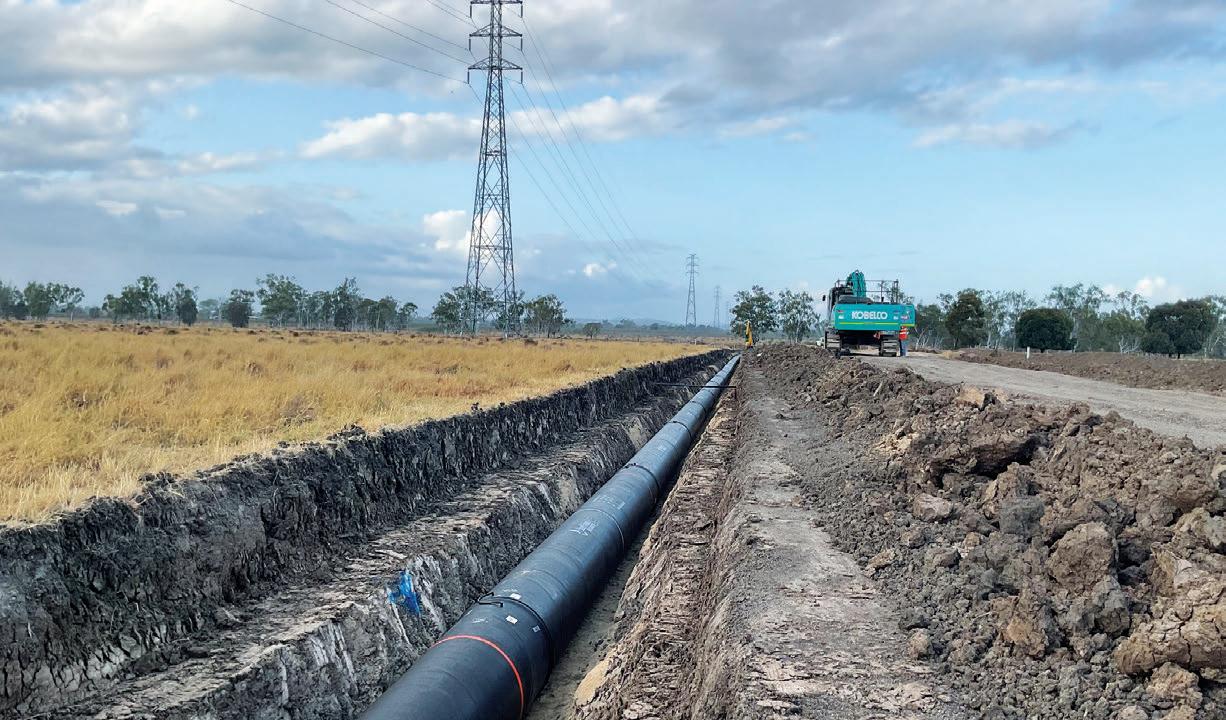
CONTENTS 4 FrontcoverimagecourtesyofGladstoneAreaWaterBoard. The Australian Pipeliner | March 2024 16 EXECUTIVE REPORTS CEO's Message 8 POLICY AEMO urged to consider gas supply chains 10 FUTURE FUELS Understanding the techno-economics of hydrogen energy 12 WOMEN IN PIPELINE FORUM Plugging the leak: how pipeliners can take action 14 WATER PIPELINES Fitzroy to Gladstone powers ahead 16 Stormwater drainage solution shaking up industry 18 Hitting the benchmark with Riteline 20 New pipeline for Coles Bay 22 PIPELINE CONSTRUCTION CO2 pipeline testing success 24 e essence of customer satisfaction 26 e 007 of padding machines 28 From A to Z with kwik-ZIP 30 Sealing success in PNG rst 32 REHAB AND REPAIR A novel approach to pipeline valve replacement 34 INTEGRITY AND MAINTENANCE A long legacy of success 36 Maintaining pipelines with ACC Corporate 38 Safeguard assets with Pack Tu 40 VACCUUM LIFTERS La crème of vacuum lifting equipment 42 A diversi ed range for safety 44 HDD Reclaiming HDD project sustainability 46 WELDING A welding master on wheels 48 A stand-out pipeline solution 50 ENERGY TRANSITION Developing opportunities to improve the energy transition 52 Pragmatism is of essence 54 APGA CONVENTION e crucial role of submitting papers to industry 55 REGULARS APGA members 56 People On e Move 58





integrated bypass maintains production during isolation












Dual Leak-Tight Seals
Double Block & Bleed Isolation














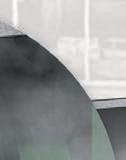









Isolated Pipeline
















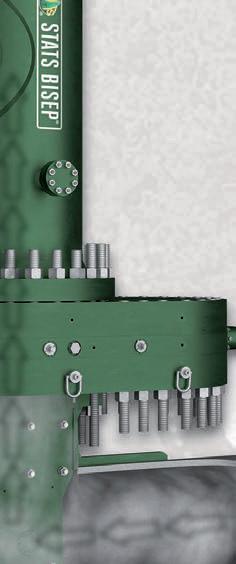






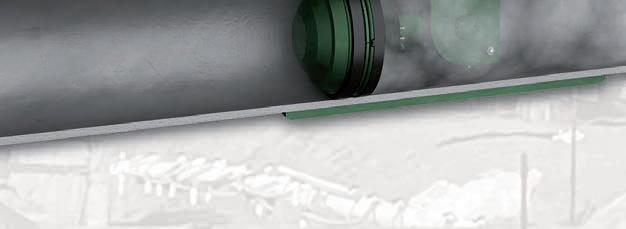



Monitored Zero-EnergyZone









The BISEP® has an extensive track record and provides pioneering double block and bleed isolation while
dual seals provide tested, proven and fully monitored leak-tight isolation, every time, any pressure.


CEO
John Murphy COO
Christine Clancy christine.clancy@primecreative.com.au
MANAGING EDITOR
Molly Hancock molly.hancock@primecreative.com.au
EDITOR
Clemence Carayol clemence.carayol@primecreative.com.au
JOURNALIST
Vivien Topalovic vivien.topalovic@primecreative.com.au
BUSINESS DEVELOPMENT MANAGER
Jake Niehus jacob.niehus@primecreative.com.au
DESIGN PRODUCTION MANAGER
Michelle Weston michelle.weston@primecreative.com.au
ART DIRECTOR
Blake Storey blake.storey@primecreative.com.au
DESIGNERS
Kerry Pert
COPYRIGHT
The Australian Pipeliner is owned by Prime Creative Media and published by John Murphy. All material in The Australian Pipeliner is copyright and no part may be reproduced or copied in any form or by any means (graphic, electronic or mechanical including information and retrieval systems) without written permission of the publisher. The Editor welcomes contributions but reserves the right to accept or reject any material. While every effort has been made to ensure the accuracy of information, Prime Creative Media will not accept responsibility for errors or omissions or for any consequences arising from reliance on information published. The opinions expressed in The Australian Pipeliner are not necessarily the opinions of, or endorsed by the publisher unless otherwise stated. © Copyright Prime Creative Media, 2021
ARTICLES
All articles submitted for publication become the property of the publisher. The Editor reserves the right to adjust any article to conform with the magazine format.

Printed by: The Precision Group
83-89 Freight Drive, Somerton VIC 3062
Ph: (03) 9490 1500
The Australian Pipeliner brand comprises: a quarterly magazine, a news website, a fortnightly e-newsletter, multiple social media platforms, an annual industry directory and an annual pipelines wallchart. Book an advertising and editorial package to gain access to our exclusive audience.
3,300+
20,000+ website views each month
13,700+ social media followers magazine subscribers
16,500+ e-newsletter subscribers
Want to find out more?
Contact our business development team to discuss how you can grow your business with The Australian Pipeliner. Call 0466 929 675 or email jacob.niehus@primecreative.com.au

Head Office 379 Docklands Drive, Docklands VIC 3008 Ph: (03) 9690 8766
Sydney Office Suite 303, 1-9 Chandos Street, Saint Leonards NSW 2065 Ph: (02) 9439 7227
enquiries@primecreative.com.au www.primecreative.com.au
The Australian Pipelines and Gas Association’s (APGA) vision is to lead the sustainable growth in pipeline infrastructure for Australasia’s energy. APGA is a non-profit organisation formed to represent the interests of its members involved in: the ownership, operation, maintenance, design, engineering, supply and construction of pipelines, platforms and all other structures used in or in connection with the drilling for, extraction and transmission of hydrocarbons, solids, slurries and similar substances both onshore and offshore. As a single voice representing the collective interests of its members, APGA is dedicated to encouraging the extension and development of the industry.
The Australian Pipeliner is the official journal of the Australian Pipelines and Gas Association (APGA) and is distributed to members without charge and circulated to interested organisations throughout Australia and overseas. It is also available on subscription. The publishers welcome editorial contributions from interested parties. However, neither the publishers nor APGA accept responsibility for the content of these contributions and the views contained therein are not necessarily the views of the publishers or APGA. Neither the publishers nor APGA accept responsibility for any claims made by advertisers. All communications should be directed to the publishers.
6 PUBLISHER Maximise brand awareness by connecting
with thousands of industry professionals
The Australian Pipeliner | March 2024
The Reliable Solution

BlackMAX® Drainage Pipes & Fittings
The original Australian manufacturer Lightweight and easy to install Water-tight protection iplex.com.au Iplex Pipelines Civil 13 10 86 Contact us to learn more about Iplex’s BlackMAX® drainage solutions.
Chief Executive O cer’s report
Welcome to the March edition of e Australian Pipeliner. 2024 is well underway and I have high hopes this is going to be a great year for our industry. is month’s theme is water, and it is really good to see a number of signi cant projects progressing well.
While we tend to focus on the implications of the energy transition for gaseous infrastructure (not just natural gas but hydrogen and carbon dioxide amongst others), there are equally large consequences for water pipelines.
We’ve enjoyed a few years of above average rainfall across most of the country, but we shouldn’t lose sight of the likelihood that climate change will lead to changing weather patterns and a growing demand for bulk water transport.
Water is a fundamental input into green hydrogen and, whatever the ultimate size of this industry, large quantities of water will be being transported to industrial-scale electrolysers wherever there is hard-to-abate industry.
e Federal Government’s Hydrogen Headstart program has shortlisted applicants for the rst tranche of signi cant funding and the list provides some insight into the types of applications we can expect of see large-scale deployment of hydrogen in the years ahead, so I encourage you to go and have a look.
As we contemplate the size of the infrastructure task in the decades ahead (I think it is a lot bigger than most of us are anticipating) the fundamental issues of land access and stakeholder engagement need to be given the highest priority. e pipeline industry has an outstanding track record in this space, and it is critical that we do not become complacent.
In early February, the Australian Energy Infrastructure Commissioner released its rst Community Engagement Review. It did not get a lot of attention, but it has some very concerning data that all infrastructure sectors should be mindful of as we try to build the next generation of infrastructure across the county. Noting that review focussed speci cally on electricity projects:
• 90 per cent of survey respondents disagreed that they received relevant information in response to a concern raised.
• 89 per cent disagreed that their concern was managed in a timely manner.
• 93 per cent disagreed that they received a satisfactory resolution to concerns raised.
Whatever processes were followed by project developers, at a minimum these numbers re ect very high expectations from land holders and communities impacted by projects.
It is heartening to me that pipeline projects have been both delivered and surveyed across Australia in the last few years without this kind of negative sentiment, it shows we are taking the necessary steps to satisfy most people.
Well done to everyone in our industry involved in this key activity! Keep up the good work and be mindful of the level of expectation out there in the community.
All the best.
STEVE DAVIES CHIEF EXECUTIVE OFFICER

ABN: 29 098 754 324
APGA Secretariat Registered O ce:
7 National Circuit, Barton ACT 2600 (PO Box 5416, Kingston ACT 2604)
T: +61 2 6273 0577
E: apga@apga.org.au
W: www.apga.org.au
Chief Executive O cer
Steve Davies
Corporate Services Manager
Michelle Wickson
National Policy Manager
Jordan McCollum
Communications Manager
Lawrence Shelton
Engagement Manager
Gayle Burns
Membership O cer
Katy Spence
Events Coordinator
Matthew Freeborough
Policy Manager
Catriona Rafael
Government Relations Manager
Paul Purcell
EXECUTIVE REPORTS 8 The Australian Pipeliner | March 2024


Unlock the Power of Data















Elevate your asset integrity with unmatched data accuracy and unparalleled expertise. Our unique synergy of advanced inspection systems, cutting-edge analytics and human expertise allows us to transform data into knowledge. Knowledge enables smarter decisionmaking and delivers a comprehensive understanding of asset safety, lifetime, and performance. www.rosen-group.com
AEMO urged to consider gas supply chains
The 2024 Draft Integrated Systems Plan continues Australian Energy Market Operator’s history of unrealistic gas supply chain and utilisation modelling. But simultaneous consultation on CSIRO’s 2024 GenCost report shows that it’s not entirely AEMO’s fault.
By APGA National Policy Manager Jordan McCollum
The biennial Draft Integrated Systems Plan (ISP) cycle delivers upon the Australian Energy Market Operator's (AEMO) legislated obligation to plan for no-regrets investments in electricity transmission infrastructure. To do so, AEMO creates scenarios to stress test a model of the transmission grid, helping to identify investments necessary under as many scenarios as possible.
Despite this purpose, the scenarios created by AEMO are being more and more frequently considered predictions of the future of Australia’s energy system. is means that ISP scenario projections have a very real impact on investment choices in the Australian energy market.
For both this reason and the ISP’s intended purpose, it is important that AEMO get it right when forming these projections. Unfortunately, when it comes to gas, they rarely do.
An example of why this is the case can be seen in gas power generation (GPG) projections. GPG should be the simplest gas sector aspect for the ISP to get right. But each ISP continues to project GPG reducing within one to three years of publication before increasing after around a decade.
Conversations with AEMO and associated stakeholders indicates that this has, historically, been at least in part due to the ISP not considering failure cases beyond a single generator failing at one time – the opposite of what was seen during the 2022 energy crisis.
It has also been suggested however that projected low GPG demand over the medium term is also due to assumed government funding for utility scale batteries (such as the Federal Capacity Investment Scheme which includes batteries but excludes GPG), making batteries cheaper than GPG in the immediate term. is, combined with increased GPG demand beyond the 10-year horizon, implies that GPG will regain its cost competitiveness when battery energy storage subsidies cease. But if this is the case then policy makers should be asking themselves whether they should subsidise utility scale batteries at all. Suppressing near term GPG demand also introduces risk in GPG capacity investment. Battery subsidies won’t be around forever, and the ISP shows that when they stop GPG will be needed once more. But it is not reasonable to expect investors to maintain

investment in GPG capacity with close to little expectation of near-term demand (or revenue) for the greater long-term good.
Either AEMO projections of GPG use do not re ect electricity market reality, or utility scale battery subsidies represent a risk to securing investment in the GPG capacity required to rm the variable renewable generation heavy electricity market of the 2040s.
Whether accurately modelled or not, the weight given to AEMO scenarios means that GPG investors will be seriously considering their market position. Without some form of revenue assurance during the 2025–2035 horizon, we may very well see GPG retract from the market at the very point when new capacity needs to be developed.
Looking beyond GPG itself, the dispatchable generation nexus between GPG and deep electricity storage shows where AEMO is missing an important part of the story. AEMO receives most of its ISP cost assumptions from the CSIRO GenCost series of reports. However, GenCost doesn’t project natural and renewable gas transmission and storage costs. is means that AEMO isn’t in the position to model these energy storage options.
AEMO is aware of what it is missing however, having referenced the capacity of the Iona Underground Gas Storage Facility in response to the Victorian Gas Substation Roadmap consultation. Iona alone has three times the energy storage capacity identi ed in the ISP as required new storage investment.
Without considering even existing natural and renewable gas storage and infrastructure options, AEMO may be overestimating the required
investment in electricity storage options. is becomes especially concerning noting that AEMO’s largest projected category of storage investment is in the form of consumer energy resources (CER) i.e. customer purchased energy storage.
is is all without considering assumed progress of electri cation of residential and commercial gas demand, which industry modelling shows is in no way connected to real world energy and appliance cost statistics.
ere is hope for a better future however, where AEMO ISP scenarios and other projections genuinely consider the opportunities of gas supply chains and the impacts on gas customers.
e Federal Government commenced consultation into a “supercharged” ISP in 2023, exploring the opportunity to model electricity and gas supply chains side by side through multi-vector energy modelling. is could inject natural and renewable gas supply chain and storage economics into AEMO’s calculations, and ultimately reduce projected energy costs for all energy customers.
However, initial signs aren’t promising. e Federal Department initially dismissed multivector energy modelling as ‘impossible’ due to resourcing, despite the University of Melbourne having accomplished exactly this through a Future Fuels CRC Project. Impossible without increased investment in modelling capability, sure, but not impossible.
Every two years AEMO updates its ISP, and APGA provides advice demonstrating AEMO’s approach to gas supply chain fails to re ect market realities. Maybe development of a ‘supercharged ISP’ will help get things right, only time will tell.

10
POLICY
The Australian Pipeliner | March 2024
A better future is possible on the condition that AEMO considers the opportunities of gas supply chains and the impacts on gas customers.
Image: Mike Mareen/stock.adobe.com.
• First to move the vacuum reservoir from the excavator stick to the counterweight
• First to use the excavator hydraulics to power the vacuum pump
• First to remove radio remote control
• First to introduce dedicated excavator operator controls
• First to introduce 360˚ rotation
• First to develop an in-trench pipe assembly apparatus
• First to develop an hydraulically assisted multiple o ring jointed pipe assembly tool


• First to develop a remote controlled in pipe inspection tool
• First to develop a VacLift that will only release a pipe when the pipe is on a solid surface
• First to increase the range of diameters able to be handled by each pipe shoe
• First to develop a fully adjustable attachment pickup.
We know the industry better than anyone, talk to us about all your pipeline plant hire needs first.
ONE CALL - PROBLEM SOLVED 1300 367 046 PIPELINEPLANTHIRE.COM.AU
Understanding the techno-economics of hydrogen energy
Our recent research shows how the economics of producing and moving hydrogen are evolving, enabling projects to move towards wider commercialisation based on better economic knowledge.
Producing hydrogen
e Universities of Adelaide, Melbourne and Queensland have worked together on a detailed technical and economic assessment of hydrogen production processes.
ey assessed 22 production methods from water electrolysis and biomass processing, to natural gas and coal with carbon capture and storage (CCS).
ese included processes such as steam methane reforming, autothermal reforming and coal gasi cation all combined with CCS.
Two variations of methane pyrolysis were also examined, where importantly carbon is transformed into a solid byproduct, rather than gaseous carbon dioxide.
ey looked at every opportunity for low emission hydrogen production, modelling how feedstocks, capital and operational costs could be combined into a quantitative economic comparison.
Over half of water electrolysis’s total costs are from the electricity used, so driving cost reductions there would create major improvements in overall cost.
For biomass processing, only electricity prices and the capital cost of the processing plants had a notable impact on the overall cost of hydrogen, which is where proponents need to focus their development work.
For natural gas the modelling showed that autothermal reforming with CCS o ers the current lowest potential costs but was heavily reliant on the cost of the natural gas feedstock.
Production that uses fossil fuel feedstocks requires CCS to reduce emissions, for which energy penalties, capital and operating costs were included. For biomass pathways, the cost of adding CCS to yield negative emissions was
also investigated as a signi cant potential extra bene t.
Purifying the nal hydrogen fuel was an important cost across all technologies, indicating that end-uses with a tolerance for lower-purity hydrogen could access supplies at a lower cost.
e researchers considered hydrogen carriers including ammonia, methanol and liquid hydrogen, to search for the most economic pathways for future development.
e modelling found ammonia was the most cost-e ective carrier on a mass basis. at cost doesn’t include conversion back to hydrogen later.
Moving hydrogen or electricity?
e widespread adoption of hydrogen produced from green electricity raises a fundamental question, is it more cost-e ective to transport “green” hydrogen molecules, or transport “green” electricity around Australia?
e University of Melbourne has delivered a rst-of-its-kind mathematical framework for nding the optimal plan of electricity and hydrogen transmission and storage infrastructure.
e team of researchers have demonstrated the capabilities of this framework with two case studies; a single transmission corridor case study that assesses supply capacity, corridor length and storage requirements and then a larger, more complex proof-of-concept case study that considers all the renewable energy zones proposed in the Australian Energy Market Operator’s 2022 Integrated System Plan. at case study also considers hydrogen export ports and how depleted gas elds for underground hydrogen storage (UHS) could play a crucial role in bu ering the variability of renewable energy sources.
is modelling considers high voltage direct current (HVDC), high voltage alternating current, reactive power plants, battery energy storage systems (BESS), and hydrogen pipelines and compressors, but also incorporates all the essential nonlinearities that in uence



infrastructure decisions. eir ndings suggest for hydrogen volumes modelled at port locations:
For steady-state throughputs, hydrogen pipelines are more cost e ective than their electricity counterparts.
In cases where more than two hours of storage duration are required, hydrogen pipelines are more cost e ective than their electricity counterparts over most distances and capacities.
In cases where only one hour of storage is required, the optimal transmission and storage infrastructure is heavily in uenced by the cost of BESS relative to the cost of electrolysers.
For export projects, linepack storage’s role is very important, as the RES supply is variable and the hydrogen export demand is constant.
Investing in UHS in the form of depleted gas elds in speci c locations in Australia can signi cantly decrease the total investment costs of transport and storage infrastructure as the marginal cost of underground storage is much lower than that of a pipeline.
is research helps to lay the groundwork for Australia’s full-scale hydrogen industry, by understanding how to make the optimum infrastructure investment.

12
For more information, visit futurefuelscrc.com
is creating the depth of new knowledge needed to take hydrogen fuel into the mainstream. FUTURE FUELS CRC
Research
The Australian Pipeliner | March 2024
Future Fuels CRC Chief Executive O cer David Norman. Image supplied by Future Fuels CRC.
Future Fuels CRC Chief Executive O cer David Norman
















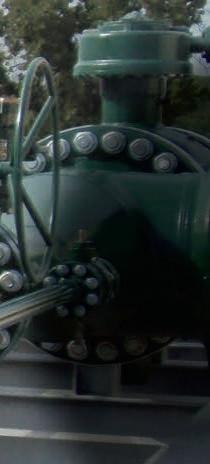









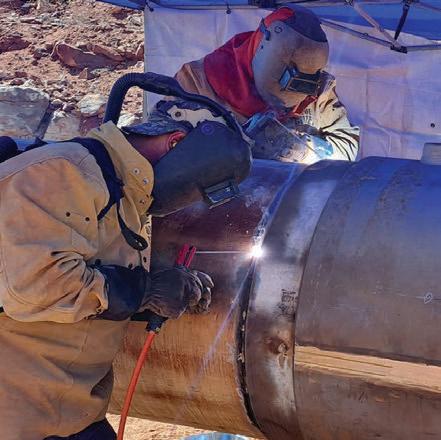










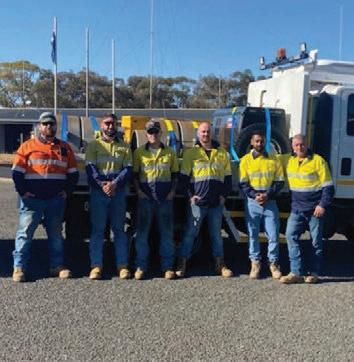




Plugging the leak: How pipeliners can act
The Women in Pipeline Forum discusses this year’s United Nations International Women’s Day theme: ‘Count her In: Invest in women. Accelerate progress’.
By Gretyl Lunn
Iwent to my rst International Women’s Day event two years ago and couldn’t quite describe why I thought it missed the mark. e gender pay gap, a rmative action, even menstrual leave, were some of the topics mentioned. Important topics, but all I could think was, “wow, the presenters are trying so hard to be edgy with these topics.”
Pretty soon I realised what was missing: action. International Women’s Day was rst celebrated in 1911 and was recognised by the United Nations (UN) in 1975. Today, this date is a reminder that gender equality is still a human rights challenge across the globe.
is year’s theme from the UN is ‘Count her in: Invest in Women. Accelerate Progress.’ As the industry undergoes change, how we embrace diversity of people and thought will remain pivotal for our role in steering Australia to a greener economy and sustainable energy systems. ere are two components to building a gender diverse workforce attraction and retention. e rst involves encouraging more women into science, technology, engineering and mathematics quali cations, trades and the industry, which remains a permanent priority. e second involves supporting and developing the women already in the industry, so that they can thrive. However, despite massive strides in women’s representation over time, there is still a noticed attrition of women over 30 from the industry. is phenomenon is referred to as the ‘leaky pipeline’.
During the APGA Convention last year, the WPF asked, ‘what can you do to empower women in the industry?’ and ‘what do women in
the industry need?’ e responses covered ve common themes: trust, opportunity, mentorship, support, and safe spaces.
Support and safe space made up 34 per cent of the responses regarding the needs of women in the pipeline industry. It’s critical, and yet importantly, can be remedied with the actions of individuals.
To me, a safe space looks like my rst commissioning manager sitting me down and telling me, “if you have any problem with anyone on site, you tell me, and we’ll handle it”. It was my General Manager terminating the contract of a contractor who had sexually harassed me. It was my friend, also a rst-year graduate at the time, saying after I con ded in him about the harassment: “I thought I should have said something because you looked uncomfortable and next time I will”.
You can’t write a procedure on how to be a safe space. It is a choice that is made by individuals and hopefully fostered by a site or company.
Ultimately it comes down to individuals treating women with the same respect as their male colleagues, bestowing trust, and being trustworthy providing encouragement.
It also comes down to recognising women’s achievements, actively ensuring a safe work environment – physically, socially and emotionally, checking their unconscious bias and ensuring women on site or in their team are included in social events.
Mentorship also empowers women, not just professionally, but by actively providing that safe space, particularly for young people who may have never been in a professional or site-based
role before.
There are other, broader goals, which aim to empower women. Opportunity was featured in 27 per cent of responses on how to empower women in the industry. Many missed opportunities stem from the fact that women are still assumed the primary care giver in our society. To change this requires a greater social change, but we could start with encouraging exible work for men to share home duties more equally as well as changing construction rosters to make them family friendly.
Encouraging exibility for everyone allows both men and women to have real choices about care giving and gives women opportunity in the workforce.
Finally, there are procedural initiatives which can be implemented within companies:
• Gender neutral parental leave
• Flexibility in working hours - without conditions that impact career development
• Availability of development training
• Awareness of harassment and reporting policies
• E ective diversity, equity, inclusion and unconscious bias training
• Industry and company mentorship programs
So with International Women’s Day this month, are you going to inspire action to truly make women feel like they count, or is it just going to be a day for a nice morning tea (organised by women)?
How are you counting the women around you in? Would your graduates or apprentices feel safe sharing with you something that’s made them uncomfortable? Do they have the opportunity to?
To truly count women in and plug the leaky pipeline is a choice all can make every day.

14 The Australian Pipeliner | March 2024
WOMEN’S PIPELINE FORUM
Empowering women can’t happen without taking concrete actions.
Image: AFotostock/stock.adobe.com.
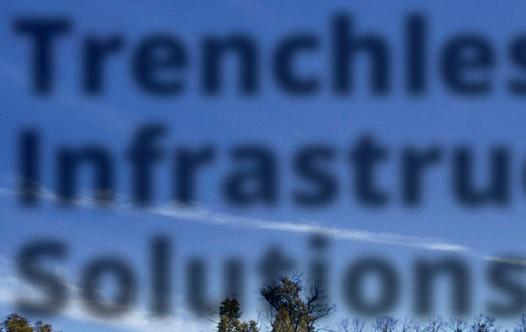
Trenchless Infrastructure Solutions


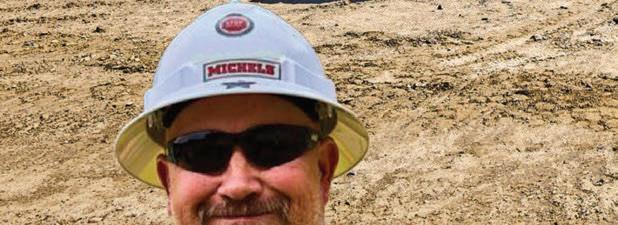

Horizontal Directional Drilling
· Completed record breaking 4.7km long HDD
· Hundreds of intersect and long-length crossings
· Rigs available with push/pull capacity up to 815 tonne
· Pipe Installations up to 1.5m
Direct Pipe
· Foremost Direct Pipe Contractor
· Outfalls and shore approaches
· Pipe Installations up to 1.5m
Australia-based operations with permanent local resources
Fully integrated with our global team at international headquarters
Multiple NASTT Project of the Year awards


MichelsTrenchless.com.au
1300 464 243 Level 1 | 98 Murphy St | Wangaratta, VIC 3677 SCAN ME 8,000 people strong founded in 18,000 pieces of equipment
Fitzroy to Gladstone powers ahead
Since starting construction in October 2023, the Fitzroy to Gladstone Pipeline continues to make progress.
As of December 2023, a total of 26km of pipe had been laid through the northern pipeline corridor, making up more than 22 per cent of the 117km of pipe required.
is includes two of the seven total water pipe adaptors within the pipeline corridor. e remaining ones will be completed during the dry season of May to September this year.
roughout the period, pipe laying from Ski Gardens Road to the Alton Downs water treatment plant was also completed, as well as two trenchless crossings at Nine Mile Road and Ridgelands Road in in Alton Downs.
Meanwhile, in November 2023, pipe laying through the northern area of the Stanwell to Gladstone Infrastructure Corridor State Development Area commenced. Pipe laying works of the southern area of the pipeline corridor is expected to commence early this year. is will follow the completion of preparative works such as geotechnical investigations and cultural heritage clearances, which have been ongoing since mid-2023.
Other upcoming activities include the Ridgelands Road and Laurel Bank Road intersection upgrade, site establishment at Alton Downs water treatment plant and Fitzroy River and continued local procurement and engagement of subcontractors.
In October 2023, Fitzroy to Gladstone Pipeline (FGP) Chief Operating O cer Hugh Barbour and Project Delivery Director Graham Stacey also visited the Steel Mains facility, which is providing 106km of mild steel cement lined pipes to transport the high-pressure water in the pipeline.
e $983 million FGP will have the capacity to transport 30 gigalitres per annum from the FPG in Queensland.
e new pipeline will address Gladstone’s

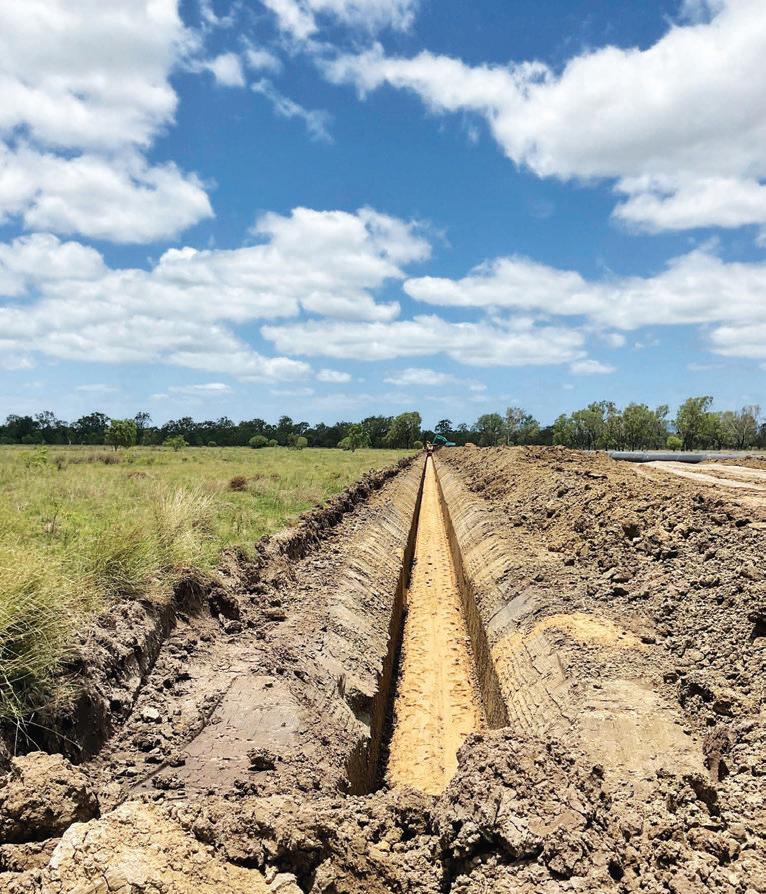
single source water supply risk from Awoonga Dam and will enable long-term security for customers.
Construction began in October 2023 which saw former QLD Premier Annastacia Palaszczuk and Minister for Water and Member for Gladstone Glenn Butcher attend the sodturning ceremony.
“ is critical project is more evidence that Queensland’s Big Build is delivering for Queenslanders, no matter where they live,” Palaszczuk said at the time.
“Its construction will also lead to new industries like hydrogen establishing themselves in Gladstone knowing they have water security, delivering the clean energy jobs of the future.”
e pipeline comprises of a water treatment plant, reservoirs and pumping stations along its alignment.”
Butcher said following recommendations from


experts at Brad eld Panel, the best use of water resources is using water closer to where it falls and developing regional water grids.
“ at is exactly what we are doing through delivering Rookwood Weir and the Fitzroy to Gladstone Pipeline,” he said.
McConnell Dowell BMD Group has been contracted to construct the pipeline, and once constructed, the FGP will be owned and managed by the Gladstone Area Water Board.
“We’re eager to see the lasting positive legacy that the Fitzroy to Gladstone Pipeline will have on our region, creating economic prosperity and resilience for both Gladstone and Queensland for generations to come,”
Gladstone Area Water Board Chief Executive O cer Darren Barlow said.
e project is expected to be completed in late 2026, weather and construction conditions permitting.
16 The Australian Pipeliner | March 2024
WATER PIPELINES
Images: Gladstone Area Water Board.
Two of the seven total water pipe adaptors have been installed.
The new pipeline will enable long-term security for Gladstone.

EXCELLENCE
IN UTILITES
Abletech Underground is recognised as a trusted leader in providing industry solutions for a wide range of sectors and industry projects.
Abletech Underground brings a wealth of experience and capabilities to the energy sector, approaching each pipeline project with the utmost e ciency. We have the ability to mobilise Australia-wide, understanding individual site requirements. We ensure our clients’ needs are met while establishing long-term professional relationships founded on personalised service, reliability, and e ciency.
Abletech Underground has unmatched expertise gained from our extensive involvement with a multitude of challenging large-scale projects. Our highly skilled team, up-to-date industry accreditations, state-of-the-art equipment, industry leadership, ISO certifications, and attention to detail.

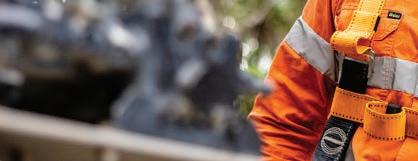
WWW.ABLETECHUNDERGROUND.COM.AU admin@abletechunderground.com.au Road and Rail Water Authorities Construction Oil & Gas Surveyors Solar Tunnelling & Drilling Engineers, Consultants, Designers Environmental Residential Owners Mining Councils & Government INDUSTRIES WE WORK WITH:
Stormwater drainage solution shaking up industry
Iplex’s product portfolio is a testament to its dedication of advanced solutions that enhance performance, durability, and e ciency. One of these innovations is BlackMAX® stormwater drainage pipes and ttings.
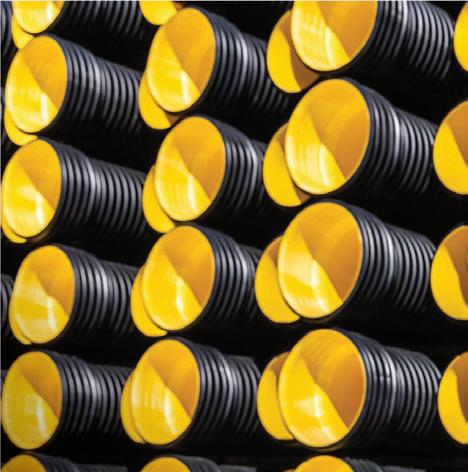
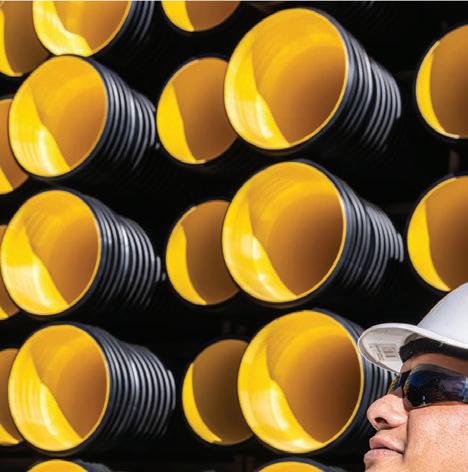
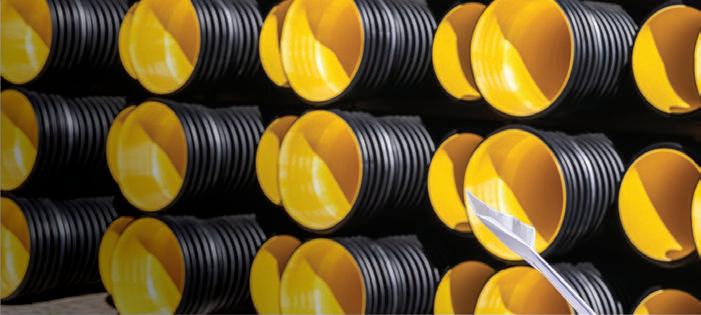

When it comes to stormwater drainage systems, steel-reinforced concrete has previously been the chosen material.
However, in recent years heavy duty corrugated plastic drainage pipes have been recognised as a viable alternative.
As the original plastic large bore structured wall pipe manufacturer in Australia, Iplex takes pride in providing councils, asset owners and developers an alternative solution for stormwater drainage.
Having been in the water industry for over 30 years, Iplex National Technical Sales Engineer Don Tasevski attests to the quality and reliability of BlackMAX as a competitive alternative to the conventional concrete pipe.
“We wanted to provide an alternative solution to concrete drainage pipes, o ering a durable and lightweight system which is resistant to corrosion
and root intrusion,” Tasevski said.
With a high sti ness rating of SN8, the e cient design of the BlackMAX pro le wall features a smooth inner bore and corrugated outer wall, optimising hydraulic performance while maintaining structural integrity.
Poor joint performance can lead to leakage and tree root intrusion causing pipe blockages and ground water in ltration. For this reason, the quality of the joint is critical to the performance of any pipe system.
BlackMAX pipes and ttings are manufactured with a high-quality spigot and socket rubber ring jointing system.
“For pipe diameters up to DN525 the joint is made with a corrugated socket, and for our larger sizes the socket is a double wall cu ,” Tasevski said. is feature provides peace of mind by adding strength and security at the pipe joint.
BlackMAX pipes are resistant to corrosive and

aggressive ground conditions, such as acid sulphate soils and saline ground waters, enabling years of corrosion free service and minimal maintenance.
Water Services Association of Australia (WSAA) undertook a comprehensive appraisal of BlackMAX and SewerMAX and concluded polypropylene pipes have an anticipated service life greater than 100 years, if designed and installed in accordance with industry standards.
A key bene t of Iplex’s BlackMAX is its ease of installation compared with other conventional drainage pipes.
Lightweight BlackMAX pipes can be easily manoeuvred in con ned areas by hand or with light lifting equipment.
BlackMAX pipes are one of the safest pipes to install. “With the recent spotlight on the health implications of silica dust exposure, the advantage of not cutting concrete pipes is
18 The Australian Pipeliner | March 2024
WATER PIPELINES
BlackMAX optimises hydraulic performance while maintaining structural integrity.
Images: Iplex.
becoming an important point in the discussion,” Tasevski said.
“BlackMAX pipes can be cut without risks of silica dust exposure; pipe can be cut anywhere along the pipe length with a hand saw to make length adjustments on site without the need to suppress dust.”
To stay at the forefront of pipeline innovation, Iplex is extending its current BlackMAX size range.
e BlackMAX range will be extended to provide larger sizes with a complete package of ttings for large infrastructure projects.
“As councils continue to support new products and innovations, the potential for alternatives will continue to grow,” Tasevski said.
“Our larger diameter pipes provide enormous opportunities for our customers and the communities they serve.”
With over 85 years of experience, Iplex has established itself as a leading provider of water solutions in Australia.
Iplex’s commitment to collaboration, expertise and innovation have made them a trusted partner with water authorities and within civil, irrigation and plumbing markets.
» Quality and collaborative HDD design and construct services
» Expertise to advise at the right time in the project delivery cycle
» Maxi-rigs capable of long and wide diameter bores in hard rock and difficult conditions
» Building a future we all look forward to



» Gas, water and sewer, rail, road, power, telecommunications, mining, residential development, renewables and hydrogen


For more information, visit iplex.com.au WATER PIPELINES
19 The Australian Pipeliner | March 2024
LEADING HDD SPECIALIST 02 4966 5583 www.maxibor.com.au admin@maxibor.com.au Follow us on LinkedIn, Facebook &Twitter
BlackMAX is an unparalleled solution when it comes to stormwater drainage.
AUSTRALIA’S
Maxibor is using its design and construct expertise to deliver better project outcomes to asset owners and principal contractors alike

Hitting the benchmark with Riteline
The water and pipeline industries are set to bene t following Riteline spacers being successfully appraised by the Water Services Association of Australia.
Riteline Centralisers represent an innovative solution designed to revolutionise the accuracy of trenchless installations by providing unparalleled support to the carrier pipe, ensuring its xed position relative to the bored hole or encasement pipe.
So, it is no surprise that the Water Services Association of Australia (WSAA) has given Riteline Centralisers the coveted product appraisal certi cate.
Late last year, the cutting-edge technology was approved by WSAA for use in the water and wastewater industry.
Under the leadership of Chief Executive O cer Stuart Harrison, OptionX Group –the parent company of Riteline Centralisers –is making waves.
“Riteline was developed to overcome several limitations of traditional spacers,” Harrison said.
“I’m excited to see that the industry has o cially recognised the spacers.”
e successful appraisal of Riteline by WSAA provides a new option for pipeline installations that complies with WSA PS-324 for casing spacers.
"Contractors and operators can con dently use Riteline Centralisers on their projects, knowing they have been through the necessary tests and thirdparty analysis,” Harrison said.
“ e WSAA appraisal serves as a benchmark for quality within the industry. It signi es that Riteline





Centralisers have met the highest strength, reliability, and quality assurance standards.”
How Riteline Centralisers came to be Riteline Centralisers have been engineered to cater speci cally to the horizontal drilling sector, where precision and adaptability are paramount.
Unlike traditional casing spacers, Riteline Centralisers o er remarkable adaptability, accommodating pipes ranging from 100mm in diameter, with no upper limit.
e ability to make incremental adjustments on-site eliminates the need to purchase speci c sizes, reducing time, cost, and stock wastage.
It also features adjustable heights spanning from 30mm to 125mm. is versatility addresses the diverse needs of trenchless drilling projects, allowing for seamless adaptation to varying conditions.
“One of the limitations of traditional casing spacers was that they needed to be purchased in speci c sizes and couldn’t be adapted on-site to meet changing needs,” Harrison said.
“ is resulted in time, money, and stock wastage. With Riteline Centralisers, there is no need to buy multiple centralisers of di erent sizes.”
e journey of Riteline Centralisers was fueled by industry feedback and real-world eld data.
e collaborative nature of OptionX allowed Riteline to address industry frustrations innovatively, resulting in a product that aligns with the demands of horizontal drilling projects.
Innovative design of features
A distinctive feature of Riteline Centralisers is its individually attached design, minimising the risk of catastrophic failure. is innovative approach enhances safety and reliability, crucial factors in the success of trenchless drilling projects.
Unlike traditional centralisers that surround the pipe and are prone to failure when snagged on obstacles, Riteline's design ensures a more secure and resilient installation.
e low-pro le design of Riteline Centralisers further sets them apart. is thoughtful engineering facilitates seamless grouting, preventing failures and ensuring secure and accurate installations in trenchless drilling operations. Reducing the risk of grouting issues contributes to trenchless drilling projects' overall e ciency and success.
Typically, centralisers are made to either slot together to fully surround the pipe or must be designed in a size that surrounds the pipe. Regardless of the weight or load requirements, the maximum number of centralisers is called for.
Riteline overcomes this limitation as they can be attached to the pipe as needed, with the number of spacers required based solely on the load, providing a tailored and e cient solution. is unique feature lowers excess product use, reducing costs and environmental impact.
“As each centraliser is individually attached to

20 The Australian Pipeliner | March 2024
Images: OptionX Group. WATER PIPELINES
Riteline spacers have been successfully appraised by WSAA.
Riteline centralisers have been engineered to cater to the horizontal drilling sector.
the pipe, the risk of catastrophic failure is reduced. Traditional centralisers that surround the pipe can fail when they snag on an obstacle in the bore, which can cause an entire ring of centralisers to move, compromising the installation,” Harrison said.
Flexibility and adaptability
e system can be used for all pipe materials, including steel, ductile iron, GRP, FRP, concrete, PVC and PE for pressure and nonpressure pipelines. e Flex Series can only be installed in grouted applications, whereas the Rigid Series suits both grouted and ungrouted installations.
e Flex Series is designed to ex around bore imperfections with its unique spring-like design. is not only allows for tension adjustment but also enables elastic deformation around obstacles, preventing jamming and ensuring a smooth work ow in horizontal drilling applications.
At the same time, the Rigid Series incorporates supports that provide a high loadbearing capacity and is recommended for most installations.


Industry recognition
It’s not just the WSAA that has recognised the range of Riteline Centralisers. e product range was acknowledged as a nalist in the New Technology category at the 2023 ASTT Awards, attesting to its innovation
and game-changing capabilities.
“Riteline Centralisers are Australian-owned and manufactured, developed over almost ten years,” Harrison said.
“It is fantastic to see them recognised as an innovative and game-changing product.”

For more information, visit riteline.com.au


WATER PIPELINES
What makes Riteline stand out is the adaptability of the product range.
New pipeline for Coles Bay
TasWater’s latest water main renewal project is all about providing additional water surety to the township by installing an additional pipeline from the existing water main on Coles Bay.
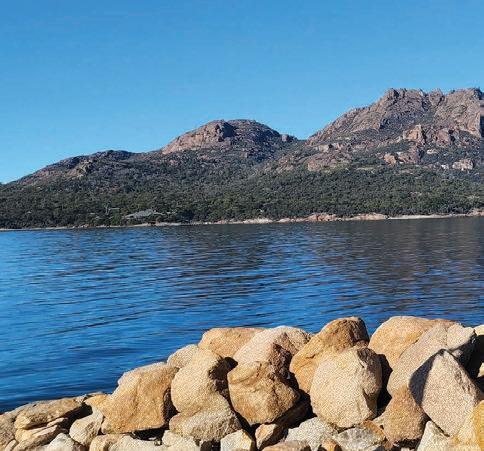
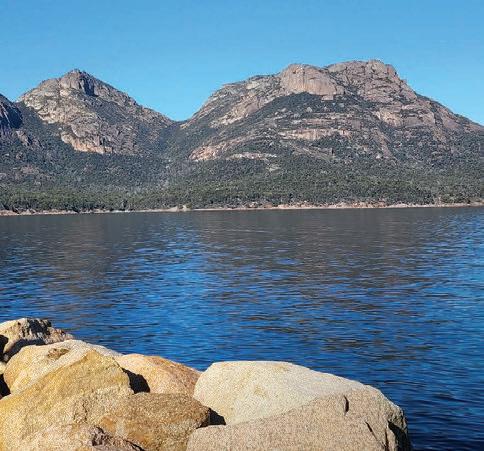


According to TasWater General Manager Project Delivery Tony Willmott, this new pipeline will change Coles Bay’s watermains for the best.
e Coles Bay township is currently supplied by a single pipeline from the reservoir to the north of the town.
e last 750m of this existing main has approximately 80 properties connected with ttings that will need replacing in coming years.
If a fault occurs to any of these connections, a complete water supply interruption is required to make repairs.
e new pipeline will be added to the existing water main on Coles Bay Road to the corner of Reserve Road.
Willmott said this additional pipeline will minimise the number of water supply interruptions for the community of Coles Bay.
“Installing a second section of water main will allow repairs to the existing pipeline to be made
without interrupting water supply to the entire Coles Bay community,” he said.
e Coles Bay township is supplied with water from the recently upgraded reservoir located north of the town.
With the current water main con guration, if a fault occurs to any part of the network, a complete shutdown is required to make repairs, which produces a supply interruption to the approximately 300 water connections that form the Coles Bay water supply network.
“As part of our commitment to the responsible delivery of safe and reliable drinking water to homes and businesses across Tasmania, this new project alleviates potential shutdowns while repairs are undertaken in future,” Willmott said.
Works are scheduled to commence in March 2024 and to take approximately eight weeks to complete once construction starts.
Weather permitting, TasWater anticipate this project to be completed by mid-2024.
Coles Bay is on the east Coast of Tasmania 192km north-east of Hobart and is the main entrance point for visitors to the Freycinet National Park.
It has a population of 515 people including the surrounding area but attracts thousands of tourists for its scenery and outdoor activities.
Each Easter the town is one of the three locations for the Australian ree Peaks Race, a continuous sailing and running event starting at Beauty Point just north of Launceston and ending at Hobart with runners scaling three mountains including Mount Freycinet. is project, besides guaranteeing water security to the communities, will also reinforce the region’s touristic hub status by avoiding any water supply interruptions.
“ e additional pipeline will minimise disruptions to residents and businesses,” Willmott said, “it will improve compliance, and provide water security for the community.”
22 The Australian Pipeliner | March 2024
WATER PIPELINES
Images: TasWater.
The Hazards mountain range looking from the Coles Bay foreshore.
Coles Bay is a destination beloved by tourists, and the new pipeline will improve water security in the area.
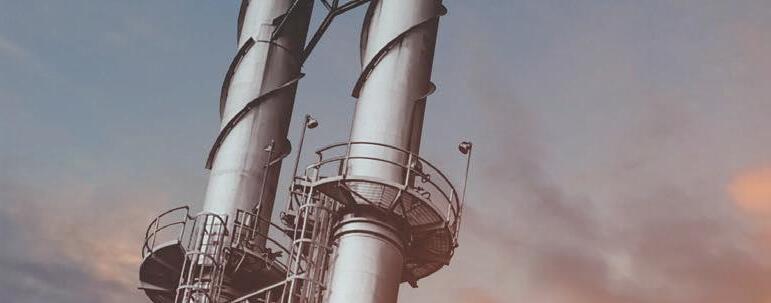




















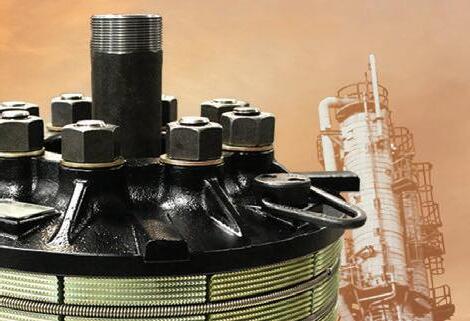







































GripTight ® Test & Isolation Plugs
Safe and Effective Solutions for Rapid Pipe Testing & Repairs
Confidently test open-end pipe, pipelines & pressure vessels without welding, and isolate & test flange-to-pipe weld connections with GripTight Test & Isolation plugs from Curtiss-Wright.
• Patented gripper design for increased safety in high-pressure applications
• Eliminates welded end cap procedures for testing pipe spools & piping systems
• Test flange-to-pipe welds without pressurizing entire systems
• Isolate & monitor upstream pressure and vapors during hot work
• Standard pressure ratings up to 15,000 PsiG (1034 BarG)
• ASME PCC-2 Type I, III & IV testing devices











Call, click or scan to learn more about our full line of Test & Isolation equipment +1.800.355.7044 l est-sales@curtisswright.com l cw-estgroup.com/tap-24
SAFE.
TRUSTED.
RELIABLE.
CO2 pipeline testing success
As Australia moves towards a cleaner energy future, more CO2 pipelines for carbon sequestration will be required. The Australian Pipeliner spoke with Pipe Tek Chief Operating O cer Taddam Farrant about the company’s successful pipeline and facility testing for contractor MPC Kinetic on Santos’ Moomba Carbon Capture and Storage Project and overcoming the challenges of working in the remote Cooper Basin.
Santos’ Moomba Carbon Capture and Storage (CCS) Project will deliver a largescale CCS hub centred around the Moomba Gas Plant, targeting capture of up to 1.7 million metric tonnes (MMt)/a of CO2 for injection into depleted gas reservoirs in South Australia’s Cooper Basin. e monumental project is an important component of Santos’
industry-leading emission reduction target of net-zero by 2040.
e project includes a 53km, 10-inch diameter carbon steel pipeline to transport compressed, dehydrated CO2 from the Moomba CCS facility east to injection wells at depleted reservoirs in the Marabooka and Strzelecki elds. e heavy and standard wall pipeline is designed


a bidirectional

to transport the dense-phase CO2 at pressures between 10-15MPa.
MPC Kinetic (MPK) was contracted to construct the pipeline, who then engaged Pipe Tek to test the pipeline and ve aboveground facilities before commissioning.
Why is this project so interesting?
Although the process of injecting into depleted reservoirs has been used for many years, CCS is a relatively new technology that has the potential to help Australia achieve a decarbonised energy future, with pipelines playing an important part in transporting the CO2 emissions.
Once completed, the Moomba CCS Project Pipeline will be the longest CO2 transmission pipeline in Australia, and its successful development will likely see more gas companies plan to sequester their emissions in Australia’s remote depleted reservoirs.
CO2 pipelines have some unique design and operational requirements:
• Maintaining a supercritical ow of CO2 through the pipeline: Pure CO2 reaches supercritical form when in an environment with pressures above 7400kPag and temperature above 31C.
• Dehydration: e CO2 needs to be dehydrated before entering the pipeline to avoid the formation of free water which could lead to pipeline corrosion or the formation of CO2 hydrates across throttling valves at pipeline de-pressuring vents and the injection wells.
MPK included rigorous testing requirements for both of the above elements as part of the Pipe Tek’s pipeline and above-ground facility testing brief.
e testing process
Pipe Tek’s Chief Operating O cer Taddam Farrant managed the pipeline and above-ground facilities testing.
Before testing could occur, a rigorous precleaning process was required. Several cleaning runs were performed with an Enduro pig train to ensure the pipeline internal surfaces were burnished and substantially free of residual dust.
“We chose to use an Enduro bidirectional pig train and pig links. It included cups, brushes, gauge plates and magnets with bypass sealing
24 The Australian Pipeliner | March 2024
PIPELINE CONSTRUCTION
Installing
brush magnet pig for cleaning inside the 53km, DN250 CCS pipeline. The tool is propelled with compressed air.
Images: Pipe Tek.

bidirectional pig with high-wear discs before being strength and leak tested to 21,000kPa and AS2885.5 requirements. e ve aboveground facilities were leak tested as per ASME B31.3.
Dewatering
Once the pressure tests were completed and approved, Farrant and his team began the dewatering and cleaning process, taking into consideration the stringent requirements to ensure no free water remained in the CO2 pipeline.
“We ran a desiccant dryer with a stage of cleaning and drying pigs to ensure no further water, debris or particles were pushed in front of the pigs as they exited the pipeline,” he said.
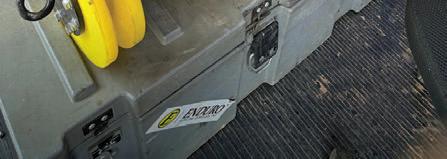
discs to allow for optimal cleaning and reduce ferrous material left behind from the construction process,” Farrant said.
“We’ve been working with Enduro as part of an exclusive partnership deal since 2019 – we choose their tools because we believe they perform above their competitors and provide more e cient and reliable data to our clients.”
e pig train and a series of magnets were run through the pipeline until visual inspection showed the internal surfaces to be clean, bright and free from particulate rust and scale, and air exiting the pipeline ahead of the pig was clear and practically free of dust.
e pipeline was then lled using a
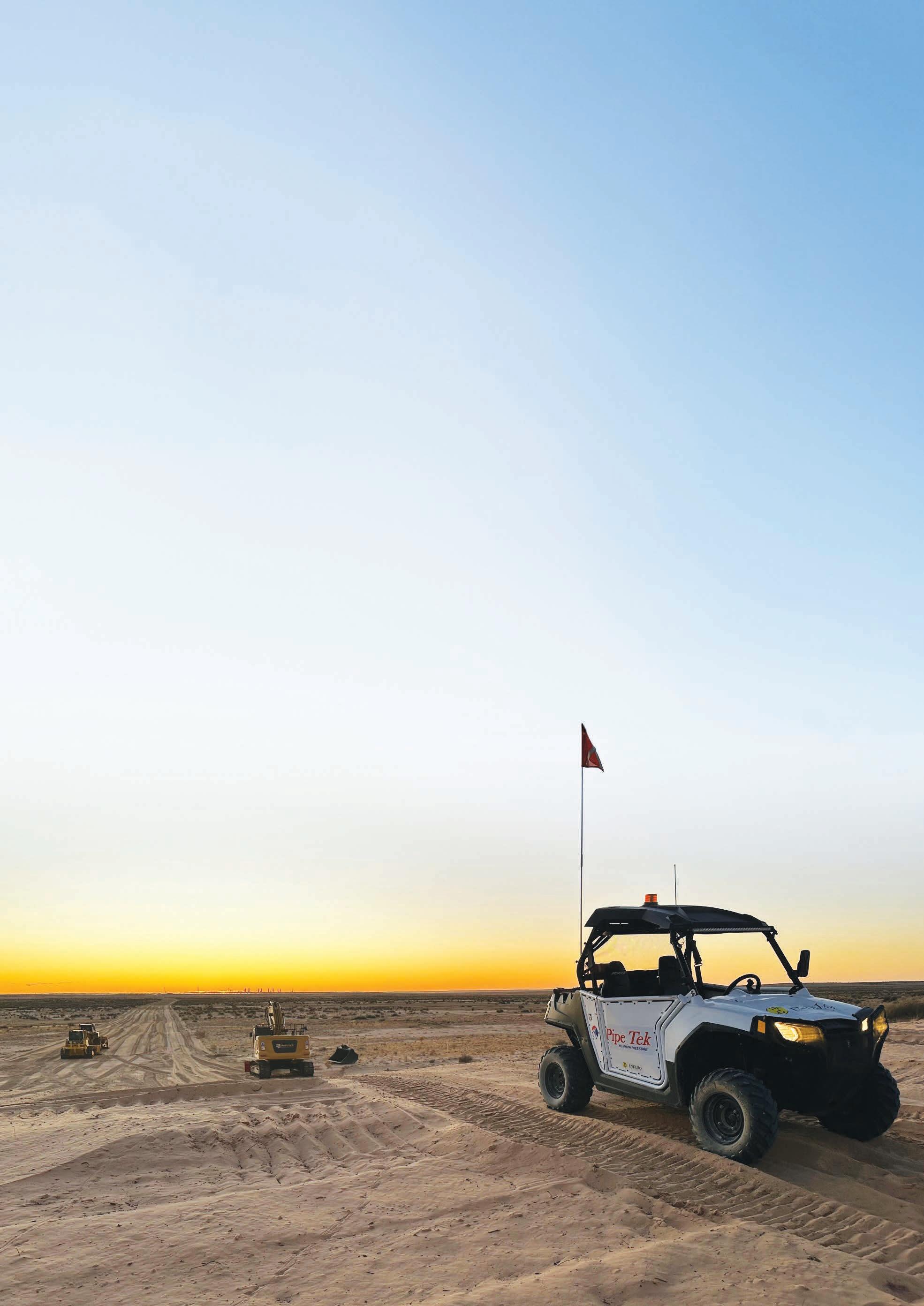
“We were working to an acceptance criterion of less than 15mm for the depth of discoloration of the foam pigs after being cut, but we managed to achieve less than 5mm penetration on the handover acceptance pig – which is an incredible achievement for a 53km pipeline.”
e dew point at the end of the drying process was -20°C.
Following the drying process, a commissioning batch treatment was carried out to establish the pipeline corrosion inhibitor consisting of 1:1 mixture of Diesel and Corrosion inhibitor.
After the successful completion of the aboveground leak tests, the pipeline was then N2 purged with less than 5 per cent residual O2 content left in the pipeline with a blanket pressure of 350kPag.
Remote location
Working in the Cooper Basin poses a large challenge in terms of transport and logistics for most companies.
“ e Cooper Basin has always been

di cult to navigate,” Farrant said.
“It’s remote, dry, hot, and dusty. is posed a particular challenge for our works because it was important, we had clean equipment and a good source of water to complete the testing.”
Pipe Tek set up mobile wash down bays for the Enduro pigs on trailers specially designed to transport the gear in and out. Located at either end of the pipeline during the cleaning and testing runs, the trailers were also set up with satellite communication so the team could receive up-to-date, live information on how the pigs were running.
MPK supplied four 750,000 litre water bladders to push the pigs and ll the pipeline for hydrotesting. e water was then disposed of into a man-made settling dam.
“ e extreme heat was also a concern. Our team worked 24 hours a day on split shifts to complete the work on time,” Farrant said.
“To ensure everyone’s safety, we made sure that our trailers were set up with shade, air conditioning, fridges to store food and plenty of water.”
CO2 pipelines represent a critical component in enabling the e cient and safe transportation and storage of CO2, supporting Australia’s e orts in reducing greenhouse gas emissions.
MPK and Pipe Tek’s involvement in successfully commissioning Santos’ Moomba CCS Project Pipeline puts them at the forefront of CO2 pipeline expertise in Australia.
“We’re so proud to have been involved in this project, and met the high expectations of the testing scope,” Farrant said.
“Now, we’re looking forward to getting started on our next challenging project.”
Pipe Tek is a pipeline cleaning, inspection, and testing company with strong attention to detail and a direct approach to safety.
25 The Australian Pipeliner | March 2024
visit
For more information,
pipetek.com.au
PIPELINE CONSTRUCTION
The dusty, hot, and dry Cooper Basin poses a challenge for pipeline cleaning and hydrotesting works where equipment needs to be kept clean and a good source of water is required.
The Enduro tools used to clean and test the Moomba CCS pipeline.
e essence of customer satisfaction
Austrack Equipment’s key focus, alongside the quality of its machinery, is making sure its customers will come back for more.
The Austrack Equipment yard can only be described as a hive of activity. With the main yard close to where the Brisbane River meets the Paci c Ocean, the Brisbane International Cruise Terminal is only walking distance away.
But at the 12,000 square metre facility, cruising is the last thing on anyone’s mind with heavy equipment is arriving and departing the yard at all hours of the day and night.
e number one customer receiving its equipment are Australia’s premier pipeline contracting companies.
It is from here that Austrack services its customers with specialised equipment that keeps Australia’s premier pipeline contractors productive.
e array of machinery on show is impressive and includes excavators up to 90 tonnes. But it doesn’t stop there with graders, loaders, dozers, telehandlers, tractors, backhoes, dumpers, Moxy’s, padders, crawler carriers, and vacuum pipe lifts also available.
ere is also an array of attachments capable of performing almost any work task that anyone installing a pipeline has ever even considered.
Austrack Plant Manager Matt Jones is in charge of looking after all operations as well as working out the complicated logistics of getting equipment to and from the facility.
“It can look a little chaotic here at times, but we like to think the chaos is organised and controlled,” Jones said.
“Our absolute priority is to ensure that our customers get the very best service possible.”
Part of the reason behind Austrack’s ability to make and keep delivery promises is the strategic partnerships the company has forged across its supply chain.
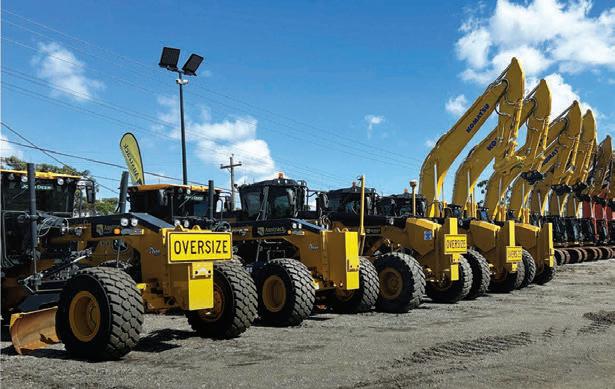
is ensures delivery promises are met and means that the equipment provided is in top class condition.
“It also means that we assist our customers with informed advice on the equipment they require to get their job done,” Jones said.
“It means getting machines to where they are needed, on time and ready to work, and it means when machines break down as they sometimes will that Austrack organises having them attended to and put back in service as soon as possible.”
Jones’ heightened understanding of customers’ needs in pipelining doesn’t just come from what he has learned at Austrack. But from his unique set of quali cations and skills.
Before Austrack, he spent more than 30 years on the front-end of pipelining.
“I spent a good deal of my work life in pipelining before I joined Austrack,” he said. “I started o in Queensland on the Cheapie to Gilmore section of the gas pipeline which eventually nished in Barcaldine.”


For the past 20-odd years Jones has been at the pointy end of water and gas pipelines in most of the mainland states.
“I have worked and ran crews at Moomba in South Australia and the Surat and Cooper Basins in Queensland, worked on the Sydney to Longford, Victoria gas pipeline and onto major Victorian water pipelines like the Sugarloaf,” he said.
His passion? Concentrating on the now with one eye always on the future.
“I know what it is to be a customer and that knowledge gives me a clear vision to deliver the considered advice and the quality service that pipeline contractors need,” Jones said.
Austrack is big on planning and reacting at speed and problem solving, positioning itself as a ‘can do’ supplier.
“What we are not big on is excuses. e words ‘can’t’, ‘won’t’ and ‘maybe’ are not much in use around here,” he said.
Jones has seen Austrack grow exponentially in his time with them.
e company has outgrown two yards already and the two-person-start-up operation has matured into a highly e cient equipment hire operation that can service its customers in any corner of this big country.
“Dealing with Austrack is not just about hiring machinery,” Jones said.
Austrack’s machinery comes backed by an expert team to support customers in every step with responsive intelligent and informed advice to tackle any challenge.
e company supplies only name brand reliable equipment, ensuring its well-maintained equipment meets the highest safety standards.
“We also pride ourselves on staying ahead of the
26 The Australian Pipeliner | March 2024
PIPELINE CONSTRUCTION
Images: Austrack Equipment.
Massey Ferguson 7724 tractor dragging heavy pipes up steep inclines on a water pipeline in Kuri Kurri, NSW.
Selection of Austrack excavators waiting for their next assignment.
curve with machinery technology. Whether it’s happening here in Australia or overseas, and the boss Mick Benson makes sure we keep our nger on the pulse,” he said.
e recent introduction of the SafeVac Lifting Systems Vacuum pipe lifter has added an extra string to Austrack’s bow and completed the range of equipment it can supply to pipeline contractors.
“ e successful introduction of our SafeVac system which sports the Australian made logo is a great sense of pride to us here at Austrack,” Jones said.
“We have supplied SafeVac systems for two signi cant water pipelines in Queensland currently under construction one being the Fitzroy River to Gladstone, the other the Haughton pipeline Stage 2 servicing Townsville.”
Jones said Austrack has already custom-built sand hoppers in service on the Haughton pipeline project, leading to the clinet wanting a second one.
“A client will come to us and tell us what they want, and if we don’t have it we go out and source it,” Jones said.
“And if it requires to be adapted or retro tted or customised, well that’s just part of the service.”



For more information, visit austrackequipment.com.au

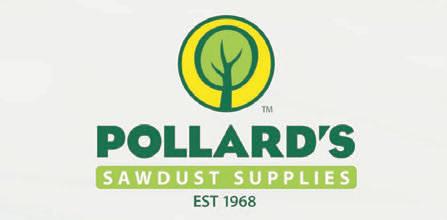






























www.sawdust.com.au 130YanYeanRoad,Plenty,Victoria3090 (03)94356167 Standingupunderpressuresince1968 DELIVERAUSTRALIAWIDE Contactusformoreinformationaboutour products, requestafreesample forevaluation, orplaceanorder. Lightweight–upto80%lighterthanequivalentsandbags Eco-friendlyfromsustainablesources Chemicalfree 3sizestosuitallpipediameters Won’texplodeorballoonunderpressure Pollard’sSawdustSupplieshasbeenatrustednationalsupplierofgraded andbaggedsawdustandwoodshavingsproductsforover50years. Thepipelineconstructionindustryhasbeenentrustingourbusinessto providesupportfortheirpipeassetsformanydecades. OurpipelinebeddingPackTuffbagsare: PIPELINE CONSTRUCTION
JCB Telehandlers reaching skywards.
e 007 of padding machines
Worldwide Machinery’s extensive inventory of equipment would not be complete without the aptly named Superior SP-350 padding machine.
This machine is the Rolls-Royce of the padding machinery, and there’s a million reasons why.
According to Worldwide Executive Vice President Padding Operations Mike Layh, the newest 350 heavy duty (HD) padding machine was built with the contractor in mind.
It is Superior’s most popular padding machine, and it is no wonder that Worldwide Machinery can count it in its eet.
e machine has quickly become the padder of choice in the pipeline and renewable energy industries.
“ is machine is operated from a comfortable chair with all the operating controls within hands reach,” Layh said.
“Four cameras bring into view key areas allowing the operator to monitor all functions while operating this machine.”
What’s more, the cab now lowers down for easy transportation without having to disassemble the machine with a maximum height of 12 foot.
Worldwide is a global leader in machinery with a proven track record of supplying quality, heavy earthmoving, and pipeline equipment across the globe, o ering new and used equipment for sale, lease, and long-term rental.
Having been constantly improved upon to quickly become the padder of choice in the padding industry, the Superior SP-350 ticks every box.
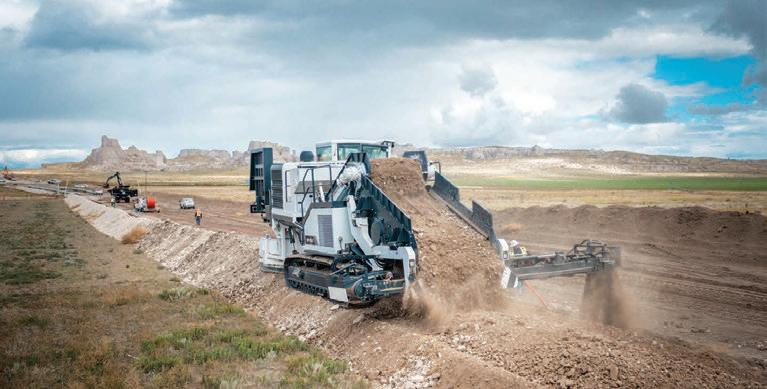

Safety rst
e machine’s roll-overprotective structure (ROPS) ensures for a safe use of the Superior SP-350.
e machine is equipped with a 10-foot by 6-foot screen allowing for 60 square feet of screening area with an enhanced vibration system.
Versatility and e ciency
“Worldwide has the best operators in the industry with many that have been operating padding machines for more than 10 years,” Layh said.
“Our service team preparing the machines before they are shipped is one of the reasons we are the premier padding operation in the US,” he said.
Worldwide doesn’t just retail and lease

machinery, it also accompanies the user all throughout the padding process, making it a one-of-a-kind customer-centred service.
Lastly, Worldwide takes pride in providing exceptional protection of the pipe or cable by meeting all necessary job requirements and speci cations.
Worldwide also counts in its eet smaller padders, the SP-150 and SP-160, which are both remote-controlled. In addition, the SP-250 is part of the smaller padders eets whichis a smaller version of the SP-350.
Worldwide o ers machine rentals with and without trained operators, if the client chooses, along with the logistical support and onsite services.


28 The Australian Pipeliner | March 2024 For more information, visit worldwidemachinery.com
PIPELINE CONSTRUCTION
Images: Worldwide
Choosing Worldwide is choosing a company that will stay by the users’ side all throughout the process.
Machinery.
The machine has been designed to quickly become the padder of choice in the padding industry.
Meet the Superior SP-350, one of the most prized padding machines on the market.

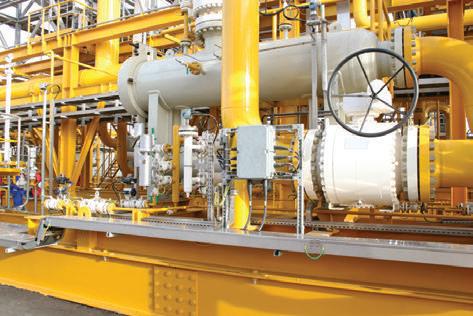
The most e ective method to maintain and improve safety and reliability of pipeline ball valves is routine lubrication using a proven valve lubricant along with a preventative maintenance scheme will ensure optimum valve operation.
The DSI range of lubricants, sealant and flush are being used throughout the Pipeline industry in all states within Australia.
All ACC’s DSI products are supplied by a company that is a leader in the manufacture of lubricant since 1968.
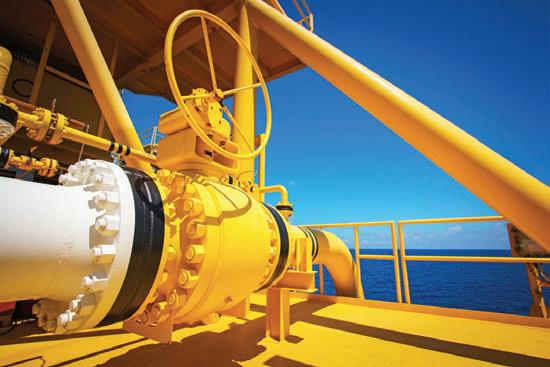
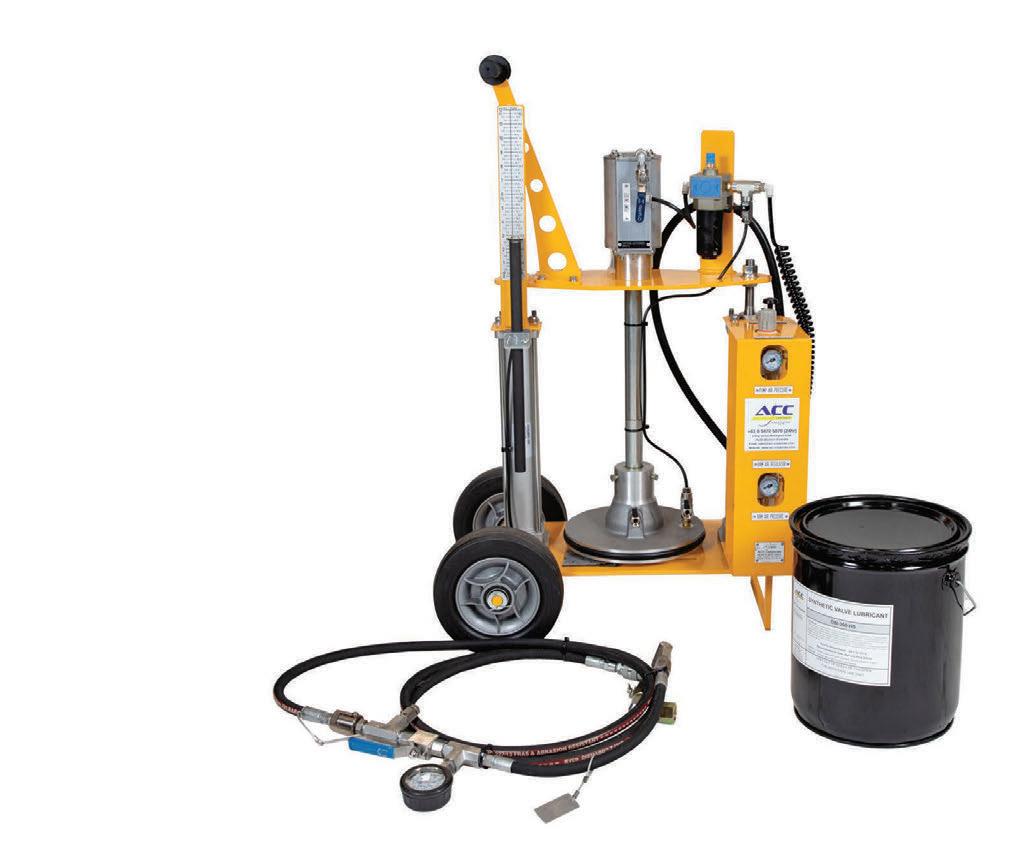


ENHANCE SAFETY AND COMPLIANCE OF YOUR PIPELINE VALVES WITH ACC
EQUIPMENT
SERVICES TECHNICAL ASSISTANCE | EQUIPMENT | LUBRICANTS | SEALANTS | GREASE FITTINGS
PRODUCTS,
AND
+61 8 9470 5070
Hours) sales@acc-corporate.com ACC Corporate 4 Roy Street Welshpool, 6106 Perth, Western Australia Call today for more information
(24
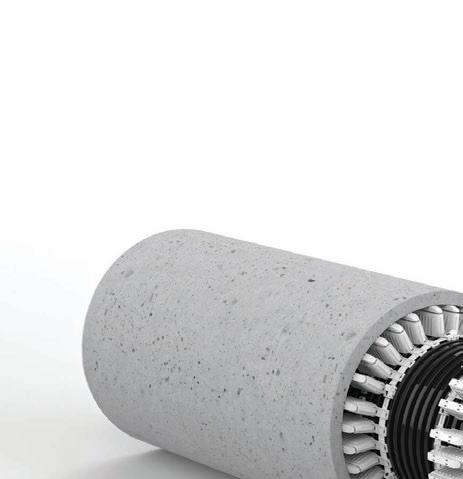
From A to Z with kwik-ZIP
The Australian Pipeliner sat down with General Manager Paul Je reys to recap kwik-ZIP’s successes over almost 25 years.
kwik-ZIP spacers shown on corrugated pipe.


The centraliser and spacer system manufacturer and supplier has been servicing the drilling and pipeline industry for just under 25 years, making an unparalleled impact on the industry.
What is the genesis of kwik-ZIP?
e company was established in 2000 by current Managing Director Jason Linaker.
kwik-Zip is an Australian owned company certi ed under ISO 9001 for production, supply, sales and distribution of inert centralisers and spacers.
Where does kwik-ZIP operate and in which industries?

kwik-ZIP has established distributors in Australia, New Zealand, United States and Great Britain and operates from its head o ce in Bayswater and maintains warehouse facilities in Perth, Sydney, Dallas (Texas, USA), and Leicester (UK).
kwik-ZIP supports many key industry sectors such as trenchless, pipeline, mining, oil and gas, ground engineering, waterwell drilling, civil engineering, and construction.
What is kwik-Zip's mission?
To provide expertise, responsive customer service, cost-e ective solutions, and an innovative range of products to meet our customers’ needs that are applicable across multiple local, state, national and international industries.

kwik-ZIP’s innovative range of products and applicability across multiple industries are a testimony to its capabilities in design and manufacturing. is is evidenced by our ongoing certi cation under ISO 9001 for production, supply, sales and distribution of inert centralisers and spacers.
What models are available and what certi cations do they hold?
kwik-ZIP centralisers and spacers are sold under ve speci c product series (HDXT, HDX, HD, GT, and 155) all with varying models within each series. Each is more applicable to speci c business sectors ensuring solutions can be found by potential customers easily.
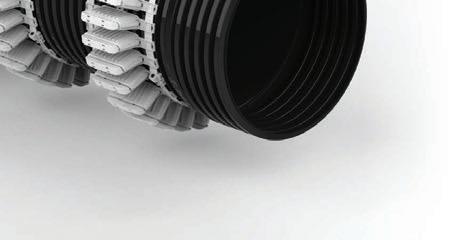
kwik-ZIP products (HDX/HDXT) are certi ed against the Water Services Association of Australia (WSAA) Product Speci cation 324 and all kwik-ZIP products certi ed by the Australian Water Quality Centre (AWQC) against AS/NZS 4020:2018 Testing of Products.
kwik-ZIP products are also approved for use
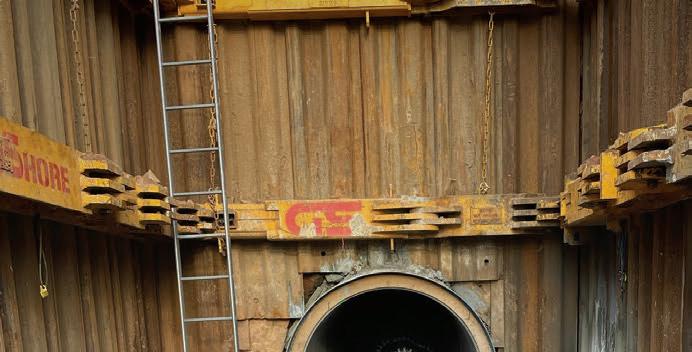

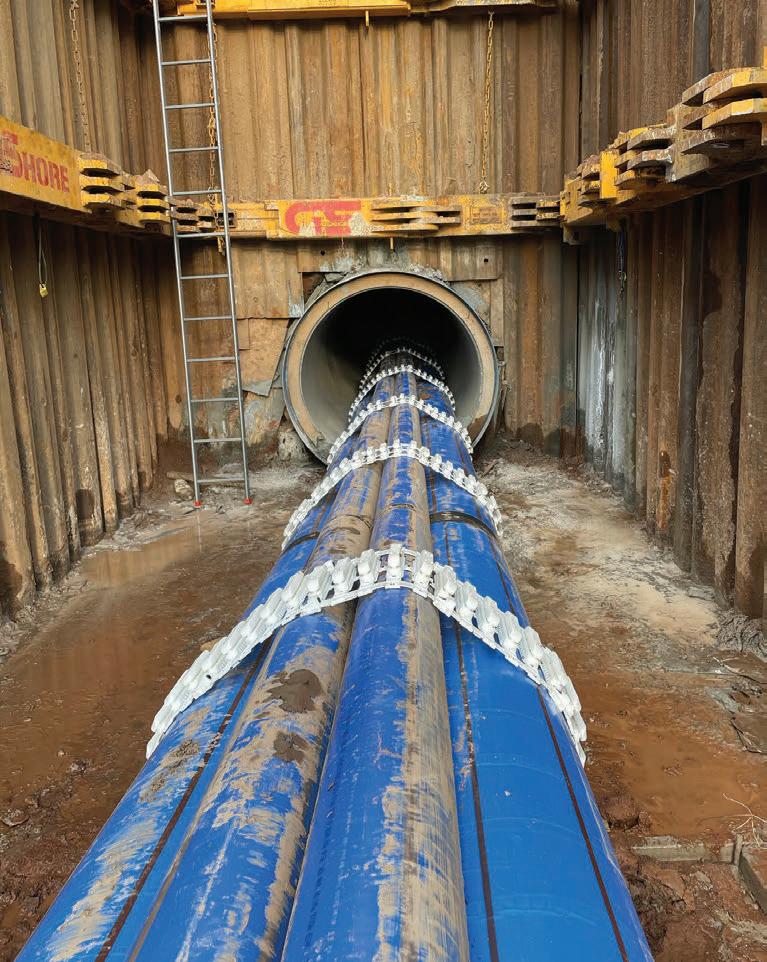

30 The Australian Pipeliner | March 2024
PIPELINE CONSTRUCTION
Images: kwik-ZIP.
kwik-ZIP HDXT-43 on a 4-pipe HDPE bundle for a project in the UK.
within many utilities infrastructure including Melbourne Retail Water Association (MRWA), South East Queensland’s (SEQ) Infrastructure and Materials (IPAM) list, Sydney Water, and the Water Corporation of Western Australia.
What makes kwik-ZIP’s products unique on the market?
kwik-ZIP’s spacers and centralisers have a segmented design, meaning they can be used on an extensive range of pipe diameters with the addition of multiple segments. Furthermore, they can be used on all manner of pipe materials pipe materials including steel, ductile, MSCL, GRE, PVC, HDPE amongst others.
ey represent the latest in centraliser and spacer innovation and provide many advantages, such as corrosion protection, low co-e cient of friction, high exural strength as well as reduced insertion forces among others.
kwik-ZIP products have numerous key di erentials. e use of kwik-ZIP products will prevent corrosion and voids that can a ect the integrity of installation. e low coe cient of
friction makes it easier for the pipe to be inserted. e spacers and centralisers are lightweight and simple to install. Finally, their segmented design and e cient packaging results in low inventory and transportation costs
What's the outlook for kwik-ZIP over the next 12 months?
kwik-ZIP is focussed on continuing to support our customers with cost e ective and appropriate solutions for their spacer and centraliser requirements. A signi cant amount of time is invested on interactions with current and prospective customers.
is time invested in our clients’ successes provides a fantastic feedback opportunity to look for improvements in our products for future iterations, as well as having a constant pulse on the challenges our customers are facing on their projects.
e information gleaned is used to determine opportunities for where our current product range can assist and the potential for development of additional products to meet the needs of customers.
For more information, visit kwikzip.com
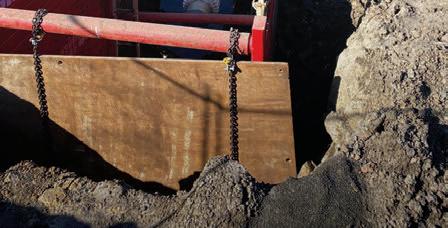





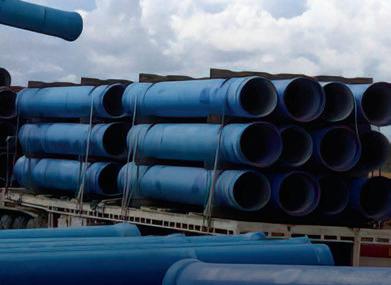



PIPELINE CONSTRUCTION Safer, more e cient material handling solutions. 22 Huntington Street, Clontarf, QLD 4019 Australia P: 0498 101 888 E: sales@vacuworx.com.au www.vacuworx.com
kwik-ZIP HDXT on 508mm OD high-strength steel line pipe with an external epoxy coating.
Sealing success in PNG rst
A challenging remote location at high altitude was the destination for STATS Group’s rst hot tap and line stopping project in Papua New Guinea.
STATS Group was contracted to provide hot tapping and line stopping services on a redundant 4-inch oil owline that needed to be recommissioned to bring it back into service.
STATS Group Field Technician Rab Milligan saluted the company’s milestone and success in Papua New Guinea (PNG).
“ is was our rst project carried out in PNG and the high altitude – at 4200ft - made conditions challenging at times, however the BISEP performed awlessly,” Milligan said.
“ e project was completed safely and ve days ahead of schedule which provided signi cant savings for the client.”
e BISEP line stopping tool was utilised to provide safe worksite conditions and avoid any discharge to the environment during breaking of containment activities.
For STATS Group Regional Manager for Asia Paci c Gareth Campbell, the project was a real turning point for the company.
“ is project is another signi cant milestone for STATS as we expand our presence to support pipeline operators in PNG and the wider Asia Paci c region,” Campbell said.
e BISEP provided fail-safe, double block and bleed isolation through a single hot tap, increasing safety while also reducing the number of ttings and associated welding and hot tapping activities.
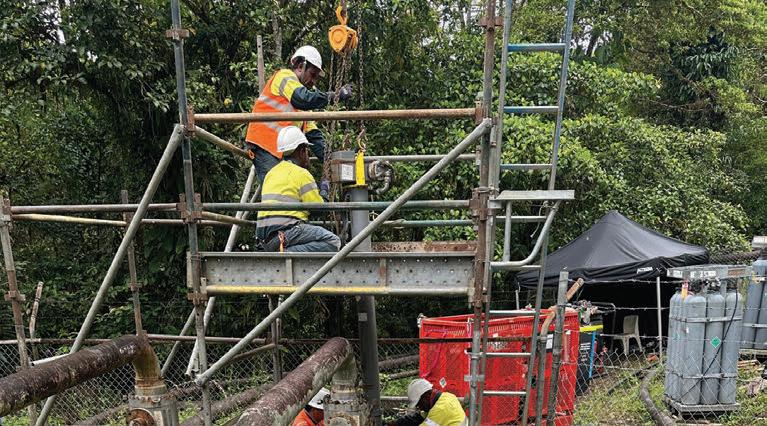

“We are delighted to demonstrate our market leading line stop technology in the PNG market and look forward to future projects as we expand our presence in the region,” Campbell said.
e leak-tight isolation allowed the pipe to be
cut and a valve manifold welded into the pressurised owline to allow a 128bar hydrotest to be conducted prior to reinstatement to con rm that the line could operate safely at its maximum allowable operating pressure.
In addition to the provision of the BISEP line stop tool, STATS Group also manufactured and supplied the tting and completion plug, slab valve and hot tap machine, along with the company’s trained and competent eld technicians.
All STATS Group’s supplied equipment was tested and certi ed prior to mobilisation to site and in line with the project parameters to con rm full functionality.
e worksite was situated next to a road which allowed access for the crane to deliver the equipment to the site location. Once at the worksite the tting was welded onto the line and tested.

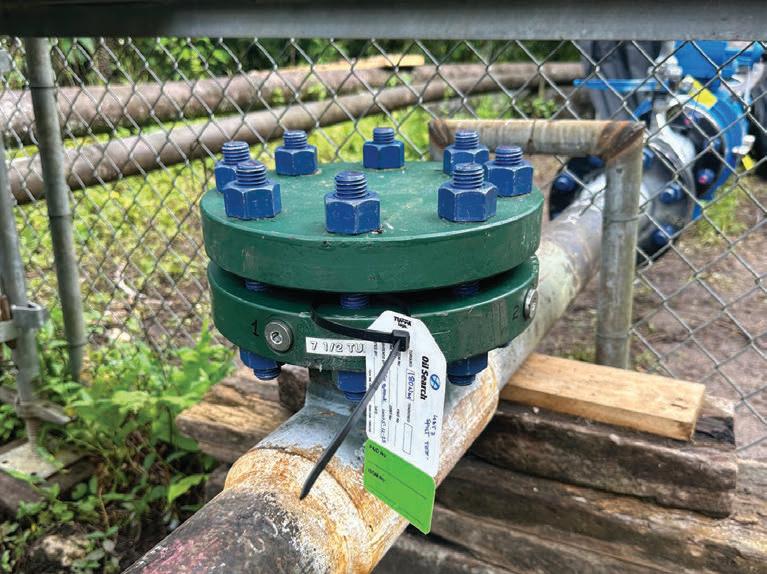
STATS Group then conducted the hot tapping, recovering the coupon and installing the BISEP ready for deployment. To remove the metal cutting chips, the BISEP head was deployed into the line to sweep the line and displace the swarf prior to redeploying the BISEP and hydraulically setting the plugging head.
Setting the BISEP causes the plugging head
32 The Australian Pipeliner | March 2024
PIPELINE CONSTRUCTION Images: STATS Group.
A successful completion plug and blind ange installation.
Hot tap machine installation using BISEP.

to contract squeezing the dual seals and causing them to radially expand and contact against the pipe wall. Hydraulic activation allows for high integrity sealing, especially in ageing pipelines which may have internal issues, such as pitting or pipelines with ovality issues.
During the setting process, the pressure within the annulus (space between the primary and secondary seals) rises as the annular space is compressed by the expanding seals. is pressure was then monitored to prove no pressure loss and provide an initial indication that the seals are isolating, allowing the client to depressurise and drain the line. Once the line was depressurised, the di erential pressure across
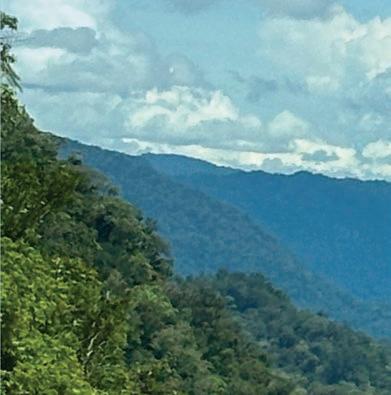


the BISEP plugging head maintains isolation independent of the hydraulic pressure providing a fail-safe isolation.
Once the isolated section of line was drained, the BISEP secondary seal was tested above the pipeline pressure to prove the integrity of the secondary seal.
e seal annulus was then vented to a safe area and locked-in. is allowed the primary seal to be tested and monitored for sealing performance.
Once the secondary and primary seal tests were conducted STATS issued an isolation certi cate to con rm leak-tight double block and bleed isolation allowing breaking of
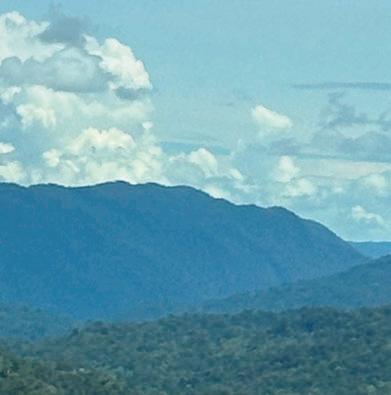
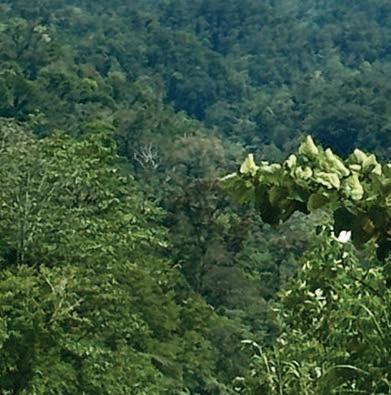


containment activities to commence safely.

e BISEP is the only hot tap installed isolation tool in the market that satis es the design criteria for DNV Type Approval for Pipeline Isolation Plugs.
On completing the successful welding of the anges and installation of the valve, a hydrostatic test of the 4-inch owline was conducted at 128bar.
With the client work scope completed, the line pressure was equalised and the BISEP was hydraulically unset and recovered from the line.
STATS Group then redeployed the hot tap machine to install a completion plug marking the end of a successful project.


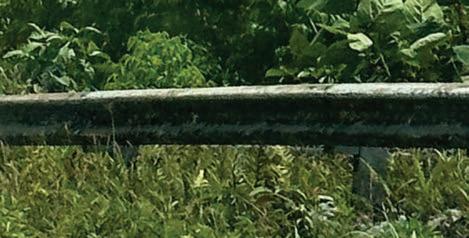
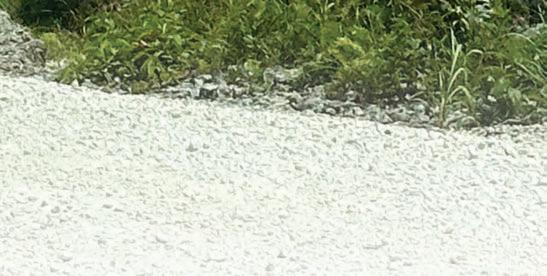



33 The Australian Pipeliner | March 2024 For more information, visit statsgroup.com
PIPELINE CONSTRUCTION
This is the rst project STATS Group has conducted in PNG.
A novel approach to pipeline valve replacement
When an oil and gas operator needed a pipeline valve replacement with key considerations, Curtiss-Wright EST Group proposed a solution.
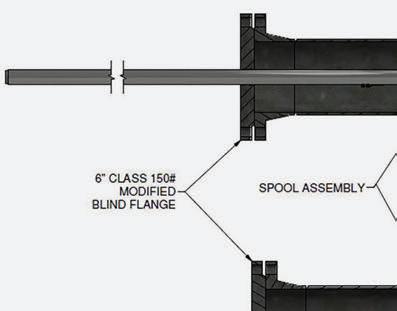
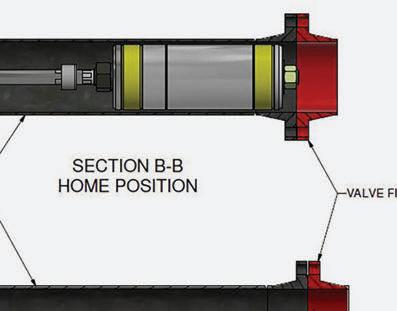



Safety and speed are key considerations when a pipeline valve needs to be replaced. However, when the pipeline cannot be fully drained of its contents and depressurised, these considerations take on a whole new sense of urgency.
For an oil and gas operator working o the coast of Australia, this was the case. e operator needed to replace a blowdown valve on a spool lled with hydrocarbons on one of its o shore platforms.
ey wanted to avoid the conventional process that requires ushing, purging, and then drying the entire spool volume prior to performing the changeout, all of which would add a great deal of time and money to the project.
Further complicating the process, the valve changeout had to be done while ensuring that the spool was completely isolated at all times. ere could be no oxygen ingress to the line and no release of hydrocarbons into the atmosphere.
Field-proven solution
Curtiss-Wright EST Group proposed a solution that previously proved successful for the operator in other “tie-in” applications, such as installing new anges into existing pipework: the Double Block and Bleed (DBB) Test and Isolation Plug.
e DBB is widely used to isolate and monitor potentially explosive vapors from upstream gases or hydrocarbon uids in a vessel or pipeline during modi cations or repairs requiring hot work.
e plug’s dual-cavity port creates a completely air-free, positive pressure barrier between its seals, allowing isolation for welding activities and hydrotesting of new weld connections to be performed with the same isolation tool.
Traditionally, this plug is used to increase the safety for welding activities and gives the operator the ability to hydrotest the new weld between the seals with less than 3.785L of water. is reduces ll times, wastewater, and treatment expenses while facilitating testing in remote areas of the facility.
e dual port system also allows water to be circulated between the seals for improved cooling during pre-and post-weld procedures.
e standard DBB’s seal is pressure rated to 155BarG, with upstream pressure rated to 0.7BarG. Higher pressure ratings can be achieved with special plug designs.
A novel installation approach
While the operator was con dent that a standard DBB would e ectively isolate the line during the
valve changeout, the installation process presented some challenges. e valve would have to be opened to allow the plug to pass through to its set point, which would expose the system to oxygen.
Working in collaboration with its Australian distributor PipeServ, EST Group developed a customised plug and installation strategy, with the ultimate goal of making plug installation as e cient, seamless, and risk-free as possible, without adding to the operator’s maintenance budget.
e launching spool and DBB were designed to safely isolate the valve during changeout through the following installation process. First, the spool assembly was attached to the valve ange. en, the DBB was inserted into the spool assembly with a lanyard and the chamber was sealed with a ange. Nitrogen gas was introduced between the ange and the DBB plug to displace all oxygen from the system.
With the launching spool closed o and no oxygen present, the valve was then opened to allow passage of the plug.
e DBB was pushed out of the launching spool assembly, through the valve and extended into the line with a long push rod to isolate the valve ange while the upstream chamber was pressurised with nitrogen.
34 The Australian Pipeliner | March 2024
REHAB & REPAIR
Images: Curtiss-Wright EST Group.
The DBB housed in the spool assembly prior to deployment (top), and after it has been deployed through the valve and into its setting position by the push rod (bottom).
e assembly was designed to ensure that the DBB would be positioned in the line precisely where it needed to be with a predetermined measurement veri cation marking on the lanyard.
e position of the plug in the line made the conventional actuation process of mechanically activating the plug by manually torquing the nuts on the shaft of the plug impossible. e system was under pressure and closed o from the atmosphere. is necessitated the special hydraulically actuated plug, which included a hydraulic piston cylinder internal to the DBB.
e cylinder was activated by energising a hydraulic hose that fed to the plug.
As the cylinder moved, it compressed the seal material forming a leak-tight seal on the two locations on the pipe wall.
During deployment of the novel DBB plug, the team had to develop a way to not only extend the plug to its setting location and safely bring it back, but also maintain pressure boundaries between the hydraulic hose assembly, connections, ttings, and gauges inside the
launching spool assembly and the atmosphere. e solution was to route the hose assembly around the push rod in a spiral. As the plug was moved into position, the assembly extended like an unraveling spring to ensure service to the test plug was maintained while the plug was extended. Once the seals were compressed, the hydraulics were locked and monitored and remained in the system—along with the plug and the rod.
To ensure that the plug was fully engaged with the pipe during the entire process, the team had to continuously monitor the pressure at the plug. e plug was positioned in the line such that the two seals straddled a 4-inch auxiliary pipe running o the main line. e team pressurised the auxiliary line and monitored it for any drops in pressure, which would indicate that one or both seals was leaking.
With the plug secure, the nitrogen pressure was released, and the launching spool assembly and failed blowdown valve were safely removed. A new valve was securely installed.
e launching spool assembly was reinstalled
The equipment required for the line isolation consisted of just three main components: a hydraulic hose line (top), the spool assembly (middle), and the hydraulically actuated DBB (bottom).
to the new valve ange and the process was reversed to safely remove the special DBB plug.
Success through collaboration
EST Group needed to operate under a tight timeline to ensure successful execution of this project. Working closely with the operator's team to ensure it met all of their speci cations, they were able to develop the hydraulically actuated DBB plug and successfully deliver it within the short window of opportunity.
In addition to the operator’s crew, a dedicated PipeServ technician was on site during the process to ensure the valve change-out went smoothly. e crew was able to perform the valve replacement in about one day, realising a signi cant cost savings in time and labor for the operator, over the four-day schedule originally planned.
e custom solution not only delivered lower repair costs versus a traditional valve replacement procedure, but the operator was able to keep their crew safe and the integrity of the pipeline and other equipment intact as well.
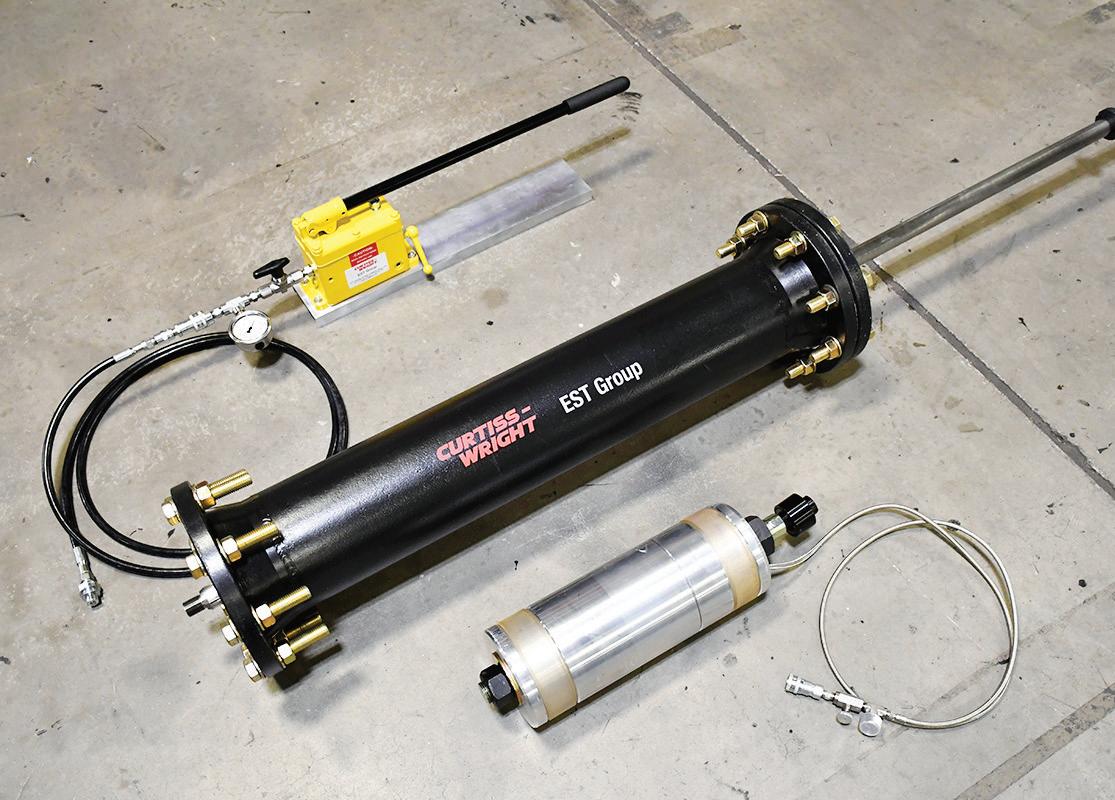
35 The Australian Pipeliner | March 2024 For more information, visit cw-estgroup.com
REHAB & REPAIR
A long legacy of success
As McElroy celebrates its 70th anniversary, the company remains a leading name in plastic pipe fusion equipment.

The company’s roots stretch all the way back to March 1954, when Art and Panny McElroy launched their new business, McElroy Manufacturing, in their garage in Tulsa, Oklahoma.
It was the couple’s dream. Art, an engineer and inventor at heart, had an entrepreneurial spirit that propelled him to always look for a better way to make things work.
From those humble beginnings, the company has grown to become a leader in fusion equipment, with machines to tackle the largest and smallest jobs in the world. Today, the McElroy family continues to keep the company at the forefront of fusion equipment, technology, and training.
A long legacy
In the late 1960s, McElroy came onto the pipe fusion scene with a 6-inch hand pump machine for Phillips. is machine was speci cally designed to fuse Phillips’s high-density polyethylene (HDPE) pipe.
Unlike the medium-density polyethylene used at the time, HDPE required a balanced fusion force
across the joint, a higher temperature, and a higher fusion force.
Art agreed with the Phillips team, who believed this new type of pipe would challenge the dominance of steel pipe used throughout gas distribution systems in the U.S.
e company quickly expanded its line, debuting its rst 24-inch fusion machine in 1972, followed by a 48-inch fusion machine in 1973. Just a year later, McElroy again revolutionised the industry with a 12-inch, self-contained wheeled fusion machine that could face, heat, and fuse pipe.
McElroy’s trajectory was o cially set. But still, the company continued to innovate, designing machines like the Pit Bull®, which allows for in-ditch fusion.
More wheeled machines – today known as McElroy’s Rolling line – were released as well, giving crews more control over where their fusions were performed.
en, in 1997, the company debuted the machine that would become known as one of the world’s agship pieces of pipe fusion equipment: the TracStar®.

McElroy founder Art McElroy stands with one of the company’s earliest





Introduced by Art McElroy’s son, Chip McElroy, the TracStar line made waves in the world of fusion. e machine was the rst of its kind, and unlike other machines at the time, it could be driven directly to a fusion site, reducing the need for heavy machinery on the location.
At the same time, its carriage can be removed from the chassis, allowing it to be used for closequarter or in-ditch applications. Today, the TracStar line is the number-one choice on fusion jobs that involve long stretches of pipe, thanks to the machine’s maneuverability and freedom of movement.
When it became clear that HDPE pipelines were only getting bigger – both in size and in scope –McElroy responded with the Talon ™ 2000.
McElroy’s largest machine to date, the Talon 2000 is tailored to fusing large-diameter pipe from 54-inch OD to 78-inch OD. Its design allows it to self-load pipe from the ground, and like the TracStar line it is self-contained, self-propelled, and track-mounted for maneuverability. Like other McElroy machines, the Talon 2000 has gone on to work in some of the harshest conditions worldwide.
Building on the TracStar’s success, McElroy introduced the TracStar® iSeries in 2020. e iSeries maintains the TracStar’s durable, selfcontained vehicle, while adding industry-changing technology to improve user experience regardless of the site or application.
e power of innovation
As time passed, McElroy’s impact on the plastic pipe industry continued to grow. In 2008, McElroy was one of the founders of the PE Alliance, an organisation dedicated to spreading the word about the bene ts of HDPE pipe, along with its many potential applications. But McElroy was also looking for ways to adapt technology to
36 The Australian Pipeliner | March 2024
INTEGRITY AND MAINTENANCE
Images: McElroy Manufacturing.
McElroy’s executive committee.
In 2023, McElroy announced the purchase of a new, 193,000 square foot facility in the Tulsa metro area. This latest campus will provide growth space while also serving as the company’s new “front door” in Tulsa.
fusion machines.
improve both McElroy equipment and the jobs where they were used.
In the 1990s, McElroy began its rst e orts to integrate technology into its equipment. e rst DataLogger® was released in 1996 as a way for fusion operators to record fusion parameters and other relevant jobsite information.
Since founding, McElroy has maintained a philosophy of innovation and as technology has evolved, so has the DataLogger itself. e most recent generation of DataLogger, the DataLogger® 7, is a versatile, ruggedised tablet that can also be used to assist with equipment inspections, machine troubleshooting, eet maintenance, and more.
Today’s DataLogger also works alongside the TracStar iSeries line, streamlining both the fusion process and the joint data that comes from it.
e Vault™, McElroy’s powerful cloud-based data storage platform, came online in 2013, giving operators, contractors, and inspectors the ability to view joint data from anywhere in the world.
Another innovation that dramatically changed productivity was McElroy Optimized Cooling™. is real-time algorithm developed in a partnership with McElroy and the University of Tulsa, re-
examined and tested standards for calculating cooling times for heat-fused HDPE.
In the classroom
A fusion machine is only as good as its operator. In 1981, McElroy created McElroy University as a way to train fusion operators on the techniques, standards, and skills necessary for optimal jobsite performance.
As proper training is a critical component to the fusion process, McElroy University has grown throughout the decades and now encompasses classes for technicians, inspections, and engineers. Students who successfully pass operations, maintenance, or inspector courses receive industry-recognised, manufacturer-backed training credentials that are readily accepted around the world.
McElroy is constantly tailoring its class lineup to the current needs of the industry, and it o ers classes both online and in-person.
Looking ahead
Now 70 years after Art and Panny McElroy founded McElroy Manufacturing, the company
Art McElroy’s son, Chip McElroy, stands with a TracStar® 900i.

continues to look to the future. For the past 35 years, Art and Panny’s children Donna Dutton, Peggy Tanner, and Chip McElroy – have not only taken the reins but have also grown McElroy to meet the needs of the industry.
In 2023, McElroy announced the purchase of a new, 193,000 square foot facility in the Tulsa, Oklahoma metropolitan area. Not only will this new campus serve as McElroy’s ‘front door’, but it will also provide additional space for a growing number of machines.
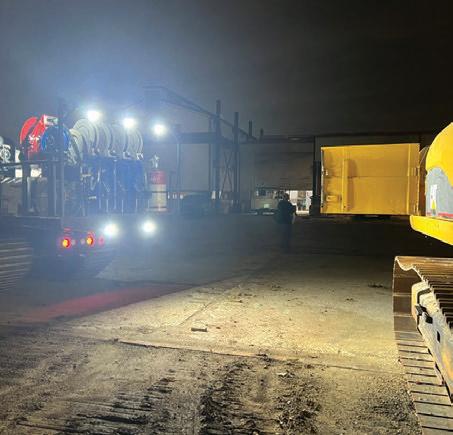







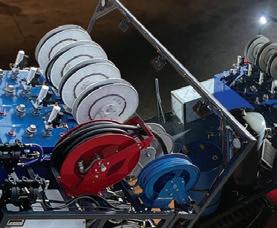




For more information, visit mcelroy.com
SAY GOODBYE TO DOWNTIME SUPERIOR’s fuel/lube crawler carrier gives you the ability to traverse difficult soil to service your equipment wherever it is, day or night, saving you time and money. sales@wwmach.com worldwidemachinery.com +61 0 488 661 985 Learn More! INTEGRITY AND MAINTENANCE
Maintaining pipelines with ACC Corporate
ACC Corporate has customers covered in pipeline maintenance with its range of services tailored for the oil and gas industry.
For over 30 years, ACC Corporate has catered for the o shore market, providing lubricants, sealant, grease ttings and grease injection pumps for pipeline operators.
rough this extensive experience, the company has proven that regular lubrication of pipeline valves will allow the valves to function correctly.
Building on its foundations rst formed in 1992, ACC Corporate’s product range has grown to encompass valve service products, grease injection pumps and valve ttings.
One speci c product that has proved popular among pipeline operators is the grease gun, which is available as hydraulic foot-operated and air operated.
e ACC hydraulic foot-operated grease injection fun is an easy-to-operate and lightweight unit that provides an extremely fast discharge rate.
e product is ideal for situations where compressed air is not available and comes complete with an aluminium frame, a 10,000 PSI hydraulic pump and a ‘J’ or ‘K’ grease stick barrel.
A versatile unit, the pump works well in o shore and onshore projects and is
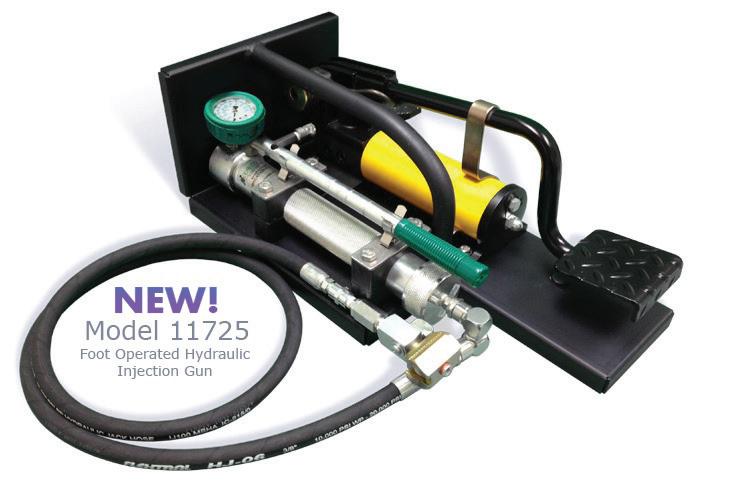
recommended for eld, plant, and platform applications.
e air operated grease gun is also lightweight and provides ease to operators with its fast discharge rate.
is pump also comes with an aluminium frame, a 10,000 PSI hydraulic pump, a ‘J’ or ‘K’ grease stick barrel and a carrying case.
Also recommended for o shore and onshore projects, the air operated grease gun is designed to
ACC Corporate’s range of valve ush, lubricants and sealants are designed to provide lubrication and sealing qualities for valves.
pump standard and special materials including lubricants, sealants, packing and cleaners.
Both units are also used for hydrostatic testing on pipelines and wellheads, with many Australian pipeline service companies using both products.
As the company has evolved its product o ering, so too has its ability to provide personnel to conduct on-site valve maintenance.
ACC Corporate technicians can ease pipeline operators minds by conducting integrity checks.



38 The Australian Pipeliner | March 2024
INTEGRITY AND MAINTENANCE Images: ACC Corporate.
Maintaining pipeline valve integrity is an important focus for pipeline operators.

Each ACC technician has training to identify faults and provide solutions to ensure the pipeline valves are fully functional. is includes testing of valve seats and cycling operations.
To assist in the maintenance of the pipeline valves, ACC Corporate has several products perfect for the job.
e company’s range of valve ush, lubricants and sealants are designed to provide lubrication and sealing qualities for pipeline ball valves.
With a focus on providing e cient support services for its customers, ACC also provides a 24/7 phone service for eld technicians to discuss any speci c issue and seek assistance from ACC personnel.
Expanding on this, ACC Corporate prioritises safety and implements various initiatives to minimise risks.
ese include utilising an online integrated management system to log risks and improvements, implementing online health and safety e-learning modules, electing a Health and Safety Representative to be the voice of its workers, a drug and alcohol testing program and safety refreshers at all sta meetings.
With its number one goal to meet client
objectives, the company follows strict quality and conformance checks on all projects and follows recommended guidelines.
roughout its journey over the last 30 years, ACC Corporate has developed its highly experienced team of professionals to ensure the
e ective development and management of its products and services.
e company prides itself on its fast response to demands and ability to adapt its o erings to comply with the various complexity of di erent client requirements.

39 The Australian Pipeliner | March 2024 For more information, visit wwacc-corporate.com
INTEGRITY AND MAINTENANCE
The company provides lubricants, sealant, grease ttings, grease injection pumps and valve ttings for pipeline operators.
For over 30 years, ACC Corporate has been providing a wide range of services to the oil and gas industry.
Safeguard assets with Pack Tu
When it comes to an economical and reliable solution for pipeline bedding, Pollard’s Sawdust Supplies has customers sorted with its Pack Tu bags.
Light, yet heavy-duty, the Pack Tu bags are an ideal solution for protecting assets, not only on-site but also during transportation and storage in laydown yards.
Since 1968, Pollard’s Sawdust Supplies has processed and distributed sustainably sourced wood shavings and sawdust across Australia.
e company’s primary material is sustainably sourced Australian softwood and hardwood bres, and its eco-friendly products are biodegradable and chemical free.
Pack Tu is a testament to this with its durability and toughness, essential factors in facilitating multiple re-uses in the heavy-duty pipeline industry.
Steel Mains, one of Australia’s largest manufacturers and suppliers of water pipeline systems, has a proud history of infrastructure delivery for over 130 years.
Steel Mains Dispatch O cer Damith Jayatilleke said the company has used Pollard’s
Pack Tu bags for over 10 years for storing pipes.
“As we look after major projects around Australia in regard to water pipelines, sewerage pipelines and steel pipelines, we require the right products to ensure the integrity of these pipelines,” he said.
“While I’ve been at the company for four years, we have used Pollard's Pack Tu bags for over 10 years and never had any issues.”
e Pack Tu sawdust bags are a semipermanent foundation for pipelines, and each bag can be reused multiple times.
Jayatilleke said the product has proved to be popular amongst operators.
“We mainly use the Pack Tu bags for pipe storage,” Jayatilleke said.
“We send the bags to customers; they use it for pipe storage, and they have found it very e ective.”
While the product has served the company

well, Jayatilleke also acknowledged the exibility and support from the Pollard’s team.
“Whenever we need them, they are always there for us,” he said.
“For example, when we require emergency deliveries, they’re always there to help.
“We can make a phone call and they’ll make sure that the Pack Tu bags are available, so we really appreciate the exibility they provide.”
Pack Tu bags are ideal for medium-to-longterm storage, for transport applications, and for keeping pipes up o the ground.
Pollard’s Director Peter Brennan said this a point of di erence of the product.
“ e Pack Tu bags can withstand a lot of hammering,” he said.
“Companies choose our bags because they can take a great deal of rough handling and tossing about on job sites.”
e bags are also available in three convenient sizes to suit all diameters of pipes and will not explode under the weight of the pipe. e largest Pack Tu bags are able to withstand up to 15 tonnes.
With its lightness, the product also allows for manoeuvrability, lowering the risk from an occupational health and safety perspective.
Providing a exible service, Pollard’s ships the Pack Tu bags across Australia with pallets arriving on-site stretch-wrapped and weatherproof.
e bags have been used on a number of projects around the country involving companies such as McConnell Dowell, Steel Mains, MPC Kinetic, Spiecapag, John Holland, and Nacap.
ese projects include the Victorian Desalination Plant, Northern Gas Pipeline, Lake Way Gas Pipeline and currently the Fitzroy to Gladstone Pipeline in Queensland.
e bags have also been used on the Wentworth to Broken Hill Pipeline, for which Pollard’s provided 25,000 Pack Tu bags.
In addition to the Pack Tu bags, the company also supplies hard and softwood products Australia wide.
is includes a variety of chemical free, graded sawdust products which can be used for a range of applications in addition to pipe bedding, such as animal bedding, absorbing oil and chemical spills, horticultural applications, and as a composite component for a multitude of end products.
40 The Australian Pipeliner | March 2024 Images: Pollard's Sawdust Supplies. INTEGRITY AND MAINTENANCE
For more information, visit sawdust.com.au
Pollard’s Pack Tu bags are a durable solution for protecting pipelines.

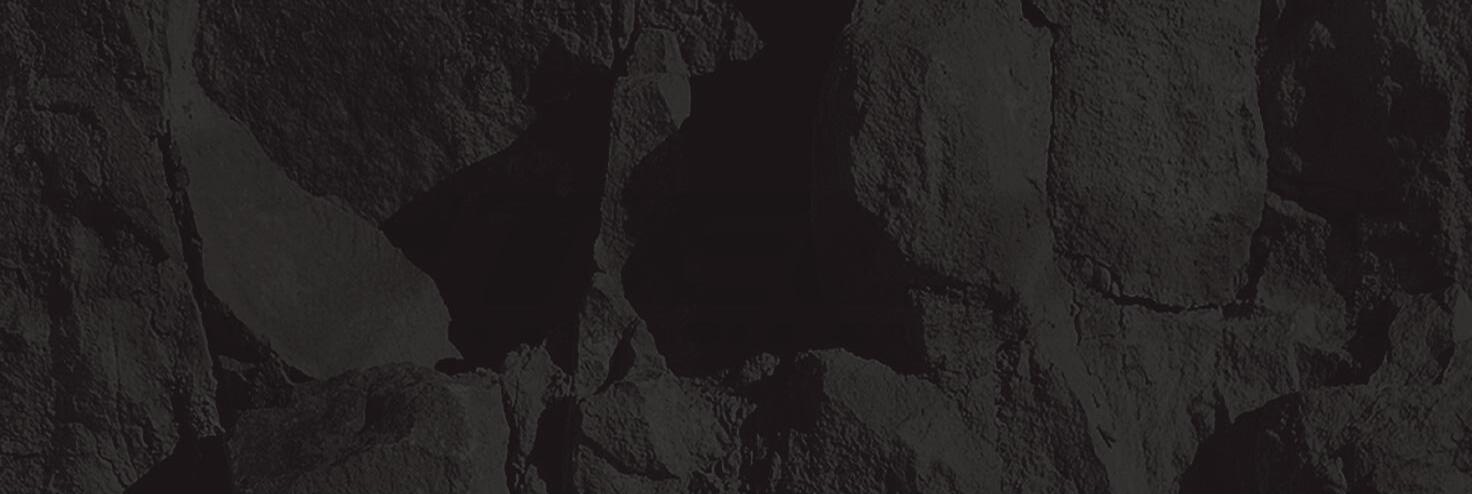




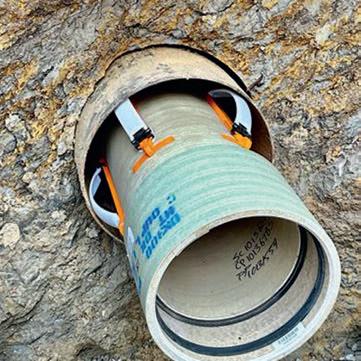








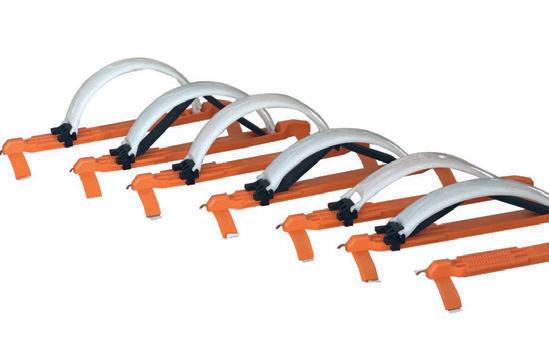


contractors, adapting to bore
ensuring pipe positioning.













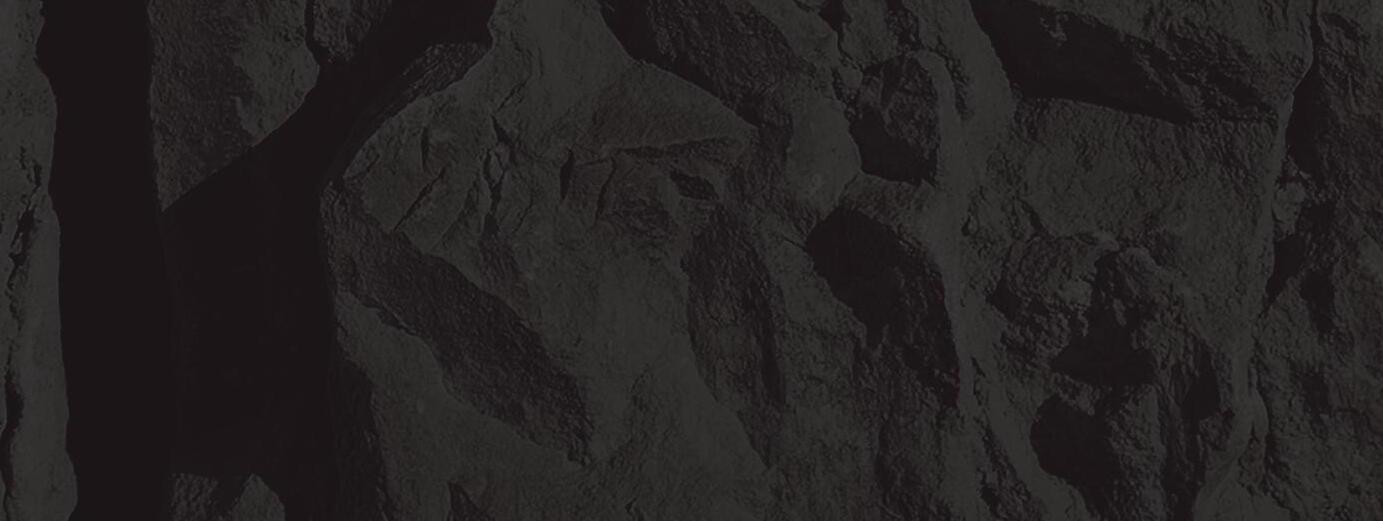









optionxgroup.com.au CREATING X-FACTOR OPTIONS FOR GROUNDBREAKING SUCCESS 1300 522 533 | info@optionxgroup.com.au | optionxgroup.com.au PRECISION PERFECTED – CHOICES EXPANDED DISCOVER THE SUPERIOR ALTERNATIVE TO CENTRALISERS AND CASING SPACERS YOU’VE BEEN WAITING FOR – RITELINE.
of development, Riteline offers a game-changing solution that caters to the exact needs
YOUR TRUSTED WSAA APPRAISED OPTION FOR ENSURING YOUR PRODUCT PIPE FINISHES ON THE RIGHT LINE! w. riteline.com.au p. 2023ASTT NEWTECHNOLOGY AWARDFINALIST WSAA Appraisal Details: PA Number: PA 2314 Product category: Casing Spacers Standard: WSA PS 324 Casing Spacers e. Hundreds of thousands of units successfully installed 100% AUSTRALIAN MADE, DESIGNED, OWNED, & MANUFACTURED Nine years of development and in-field testing WHEN ACCURACY MATTERS Edge Underground is a precision microtunnelling contractor that operates in Australia and the USA. With a focus on innovative technology and expertise, Edge Underground designs and enhances the performance of trenchless equipment. Full factory backing here in Australia means solutions can be created when they’re needed most. MICROTUNNELLING • PIPE JACKING • THRUST BORING LASER TUNNEL BORING • BOX CULVERT JACKING • CANOPY TUBES EXCLUSIVE AUSTRALIAN OPERATOR OF THE AWARD-WINNING, INDUSTRY-LEADING, ADAPTX TECHNOLOGY!
After nearly a decade
of
imperfections and
La crème of vacuum lifting equipment
The Australian Pipeliner sat down with Global Pipeline Equipment's Matt Dridan to look back at GPE’s Vaclift history, evolution, and its many distinctive features.

It all started in 2010, when Pipeline Plant Hire and Global Pipeline Equipment joined forces and the ‘great minds think alike’ motto became a reality.
“We saw the need for an outstanding vacuum lift not because we are rocket scientists, but just because of its absence from the market at the time,” Global Pipeline Equipment Manufacturer Matt Dridan said.
Global Pipeline Equipment and Pipeline Plant Hire Director Gerard O’Brien collaboration resulted in creating the VacLift, which would help revolutionise the pipeline industry.
Today, both companies have built one of the largest eets of vacuum equipment in Australia, and hired through Pipeline Plant Hire.
“We were pioneers, and we noticed there was a need for this technology thanks to the mining boom,” Dridan said.
“ is really gave us the kickstart we needed and the demand for e cient vacuum lifts as well as the opportunity to build up a large eet that supports the pipeline industry in all sorts of areas, not just oil and gas, but also water.”
Global Pipeline Equipment’s Vaclifts have aged like ne wine, adding many strings to their bow throughout the years.
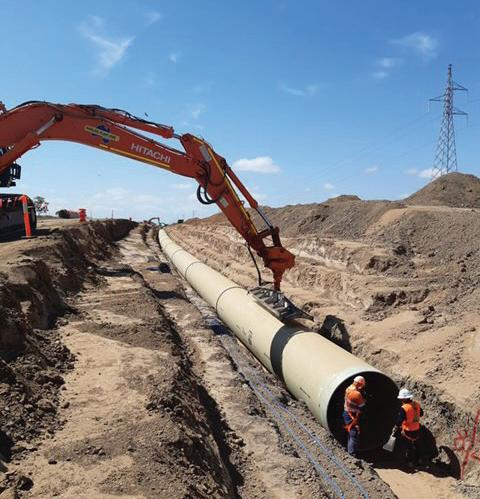
Dridan said VacLift is one of the only technologies that has gained in safety while gaining in e ciency.
e machine has become a third more e cient than conventional vacuum lifts, with two distinct types of vacuum lifts that cater di erent needs.
“One is the integrated, which as it suggests, the vacuum lift is integrated and mounted on the rear of the excavator,” he said.
“And then there's the attachment type we do, where someone already has their own excavator and they want a vacuum lift attached to the front of their excavator, generally for a smaller kind of job.”
e key to Global Pipeline Equipment’s Vaclift’s success is its simplicity, allied with patented ‘above the hook’ weight reduction, so delivering massive savings in both transports thereof, fuel and running costs.
Dridan said that when the machines are sent into remote areas where there is limited support and communication, they need to be easily serviceable.
Less is more when it comes to VacLift. e machine’s simple design makes it intuitive for operators to service and work with, allowing VacLift users a broad independence.
e integrated system doesn’t comprise any electronics, making it a machine of choice for remote applications among others.
“It is lightweight and works with a simple push button system and as such it isn’t a ected by humidity, and is very simply serviceable in remote areas,” Dridan said.
According to Dridan, the companies have “nailed it”.
“We perfected the hydraulically driven side of the machine, as well as the integration of the vacuum on the integrated machine,” he said.
e vacuum lift in the attachment type has its own onboard computer and doesn't have any wiring going back to the cab.
is patented system allows the operator to communicate to the machine through the excavators’ existing hydraulics.
“I know there are still pipeline companies and projects that are just using chains and slings to lift pipes, and not using vacuum lifts; this is ine cient and can be dangerous for ground crew,” Dridan said.
“People can get hurt, and that is crazy to me. at’s why a machine like the GPE Vaclift is the perfect t as it increases both safety and e ciency for the user.”
42 The Australian Pipeliner | March 2024 For more information, visit pipelineplanthire.com.au
VACCUUM LIFTERS
Images: Pipeline Plant Hire.
A project including vacuum lifting in Townsville.
VacLift at Mount Gambier.

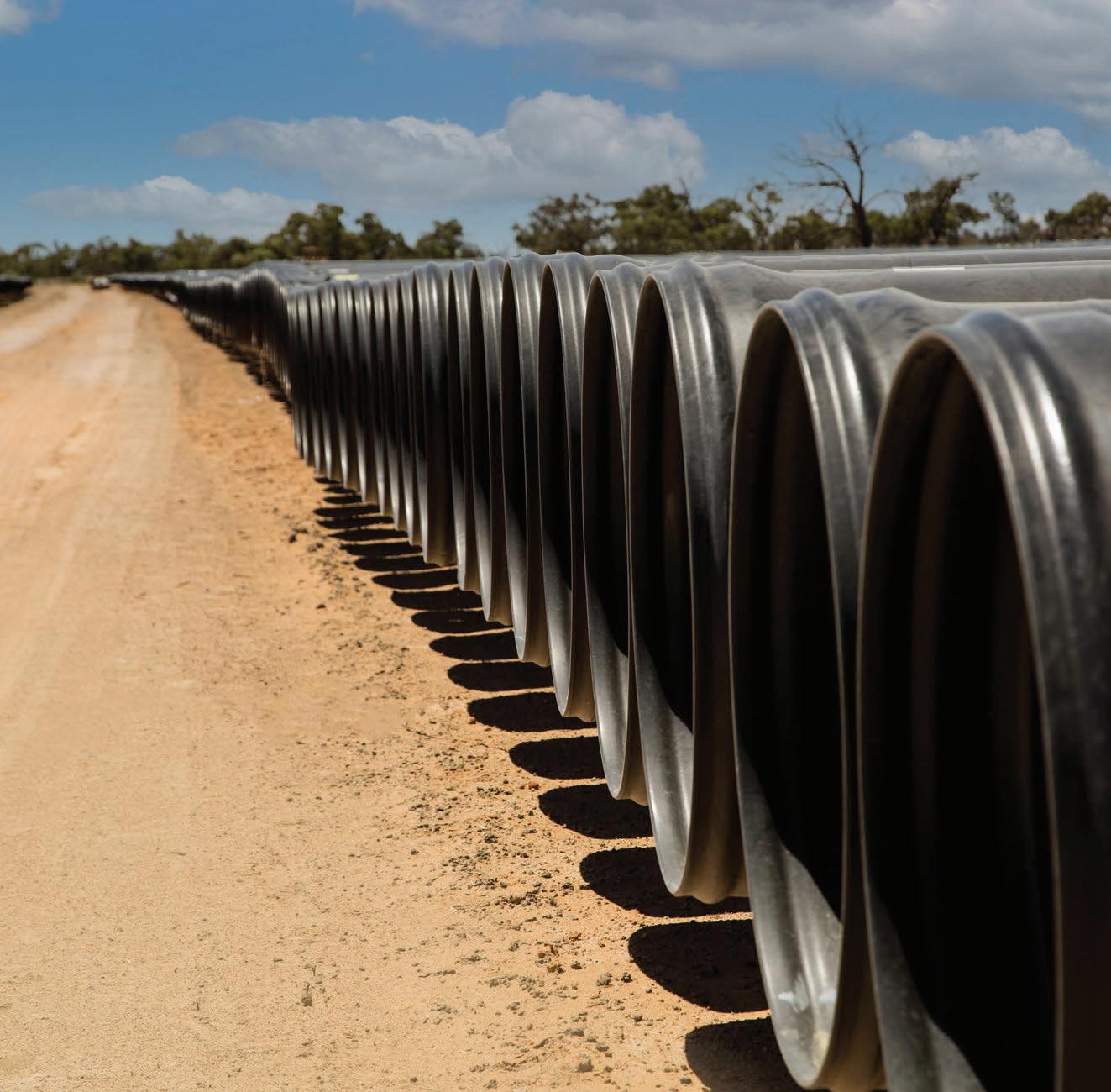





priority.
leader
customers.
business needs, we are able to provide
solutions
service. Which means you can focus all
energy on achieving success,
we deliver it.
life.
SUCCESS IN WATER TRANSPORTATION STARTS WITH THE RIGHT PIPELINE
Achieving excellence in the water industry is your number one
Helping you get there is ours. Steel Mains’ manufactures high quality steel pipelines but what makes us a
is the partnerships we develop with our
By understanding your
agile
and
your
while
Through our cutting edge corrosion systems, our Sintakote Steel Pipeline System® has an enviable 150 years’ service
Choose Steel Mains, the leader in pipeline manufacturing for your next pipeline project.
www.steelmains.com
A diversi ed range for safety
Vacuworx Australia Managing Director Luis Guevara spoke to The Australian Pipeliner about the company’s range of vacuum lifting systems.
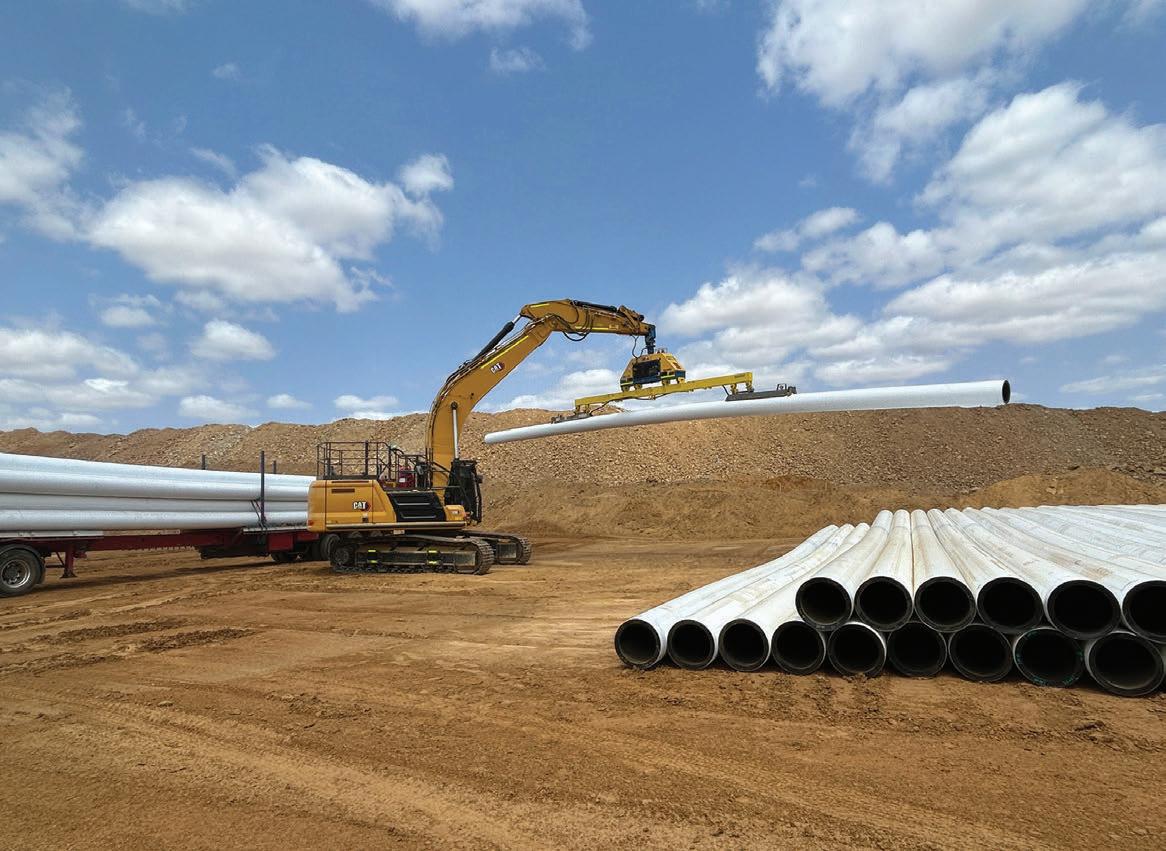
Over recent decades, vacuum lifting has become recognised as a safe approach to pipe handling, thanks to its ability to reduce risk to workers and improve e ciencies for companies.
is method has been widely adopted and has evolved alongside the use of corrosionresistant bonded pipeline coatings commonly used to protect products. Vacuum lifting technology doesn't damage materials or bonded coatings and eliminates the need for cribbing and spacers for pipes.
Utilising Vacuworx lifting systems can eliminate costly repairs that occur when handling pipe by other methods such as slings or chains.
“Our customers secure contracts based on their lifting methodologies utilising our machines simply because it's so much safer and faster,” Vacuworx Australia Managing Director
Luis Guevara said.
“It requires less personnel to load, unload, or string pipe without having to climb on pipes and trucks and stand under the pipe, and there is no damage to the pipe coating.”
Guevara added that the main focus of Vacuworx has always been to prioritise people's safety by o ering a safer way to handle their lifting requirements.
“Utilising the Vacuworx line of equipment provides the operator with the con dence in knowing that they are using the latest technology to provide a safe work environment for themselves as well as their co-workers,” he said.
One example is a recent project in the Moranbah region of Queensland where customers utilised an RC 10 to achieve a noteworthy improvement in their pipe handling process for a water infrastructure
project at a local mine.
“Using an RC 10, our customers improved their material operations by not only using it to unload pipe o the truck but also as another lifter to load the pipes onto the welding machines,” Guevara said.
“In this scenario, traditionally, contractors would tie a sling to the pipe and then use that to drag it up and then lift it onto the welding machines. Not only is this cumbersome, but it could pose a risk to workers due to the potential for stored energy in the HDPE pipe.”
Using the vacuum lifter with an 8-metre spreader bar allowed the workers to use the lifter e ciently and safely, an example of the company’s products adapting to suit the environment and material being lifted.
Vacuworx's system o ers a versatile solution for loading, unloading, and precision handling of all pipe sizes, including steel, plastic, HDPE,
44 The Australian Pipeliner | March 2024
VACCUUM LIFTERS
Images: Vacuworx Australia.
Vacuworx systems prioritise safety for customers.
berglass, concrete, and cast iron.
Not only does the company have a strong Australian presence, but it has a global reach, with operations spanning internationally.
It currently boasts a diversi ed global o ering of vacuum lifting systems and equipment available for a wide range of manufacturing, construction, and infrastructure-related material-handling tasks and applications.
“While we started with pipe, we're proud to help meet the needs of lifting and handling professionals operating in a wide variety of sectors, from oil and gas pipelines to concrete, water utility, precast, landscape, mining, manufacturing, and more,” Guevara said.
“ is breadth of operations and experience means our lifters bene t from collaboration with customers worldwide, ensuring smarter and better product design.
“We have lifters still operating that are twenty years old,” Guevara said.
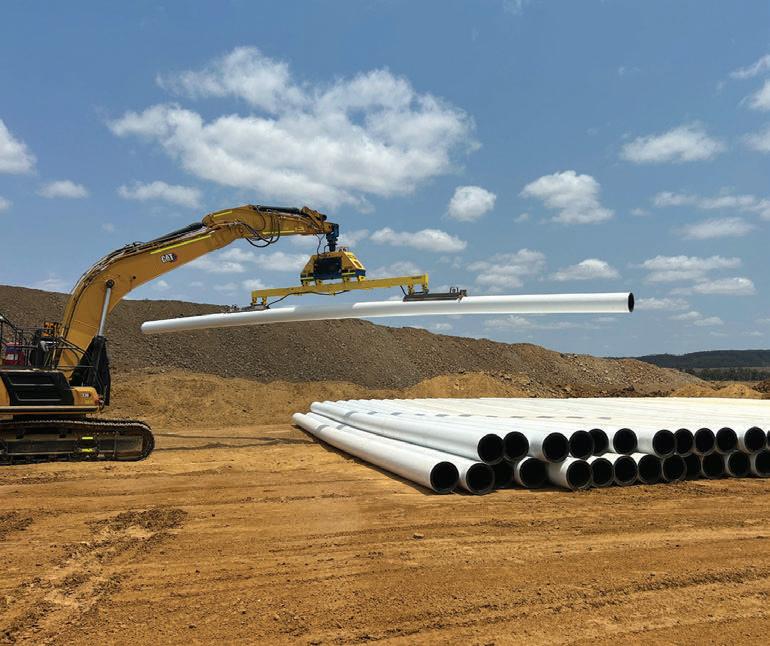
The company boasts an o ering of vacuum lifting systems and equipment available for a range of applications.
“And now with lifters being manufactured both here in Australia and the United States, we've never been better able to meet the needs of our customers in this region.” Future Pipe Industries and Empire Infrastructure: working together to deliver composite pipe to the Water, Sewer, Oil and Gas, Industrial and Marine industries.

Empire Infrastructure are now supplying Future Pipes’ range of GRP, GRVE and GRE pipes and fittings to complex projects across Australasia. Our solutions include piping system design, manufacturing, technical support, field supervision, and training.
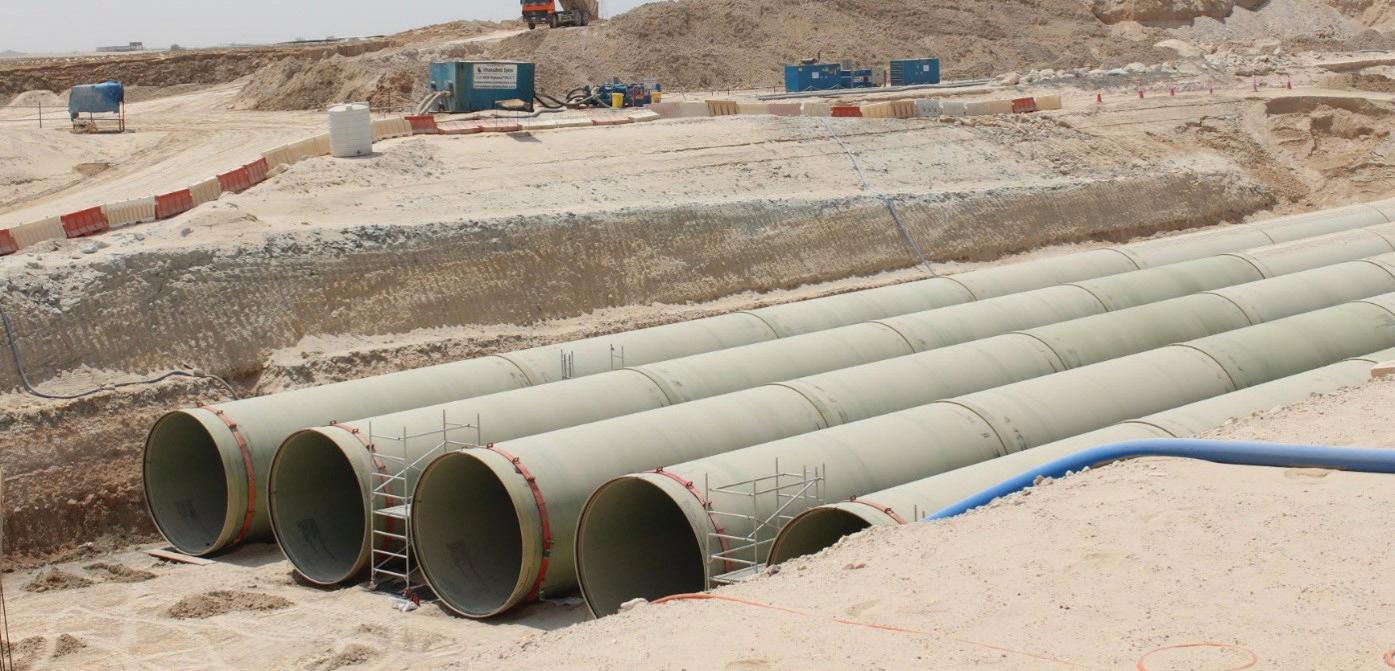

VACCUUM LIFTERS
admin@empire.team
| 1300 116 664 www.empireinfrastructure.com.au
Reclaiming HDD project sustainability
Horizontal directional drilling demand grows year on year, and with this growth comes increased calls for sustainable operations and an expectation for contractors to meet environmental, social, and corporate governance goals.
More than just machines are needed to get the job done, with contractors needing to employ equipment that facilitates sustainable operations.
As well as bene ting the environment, prioritising sustainability in operations demonstrates a commitment to environmental, social, and corporate (ESG) that can give contractors the upper hand in the competitive horizontal directional drilling (HDD) industry.
Additionally, contractors not reclaiming drilling uids aren’t realising signi cant jobsite productivity and cost-saving advantages.
Water reclamation onsite
In HDD, bigger projects call for more water which, in turn, can result in increased costs in both time and money. e labour and time it takes to coordinate the delivery of water to a jobsite, and the costs of shipping the drill cuttings to disposal sites can have a serious impact on job delivery.
Investing in drilling uid reclaimer systems alongside HDD equipment can not only help contractors demonstrate a commitment to sustainability, but also unlock cost and time savings, enabling faster and more e cient project delivery.
In addition to its extensive range of highperformance HDD equipment, Vermeer o ers



contractors the tools they need to reclaim uids onsite, unlocking sustainability and ESG in project delivery.
Top of the range reclaimers
Vermeer’s reclaimers incorporate seamlessly into large diameter drilling operations, and the compact designs provide the ease of mobility and small footprint that many HDD jobs require.
Vermeer’s R600HC Reclaimer’s integrated mixing hopper allows for simultaneous mixing and recycling within a single system, eliminating the need for an additional onsite
drilling uid mixing system.
Inlet uid is routed through mud boxes helping reduce premature wear to shaker decks/ screens caused by larger material. Additionally, an enclosure o ers critical components –including the generator set, fuel tank and electrical equipment – protection from the elements. e enclosure also features a service entry for accessibility and helps reduce noise.

Operators can select either a linear or orbital shaker motion to improve recycling performance, further enhancing equipment exibility and adaptability.
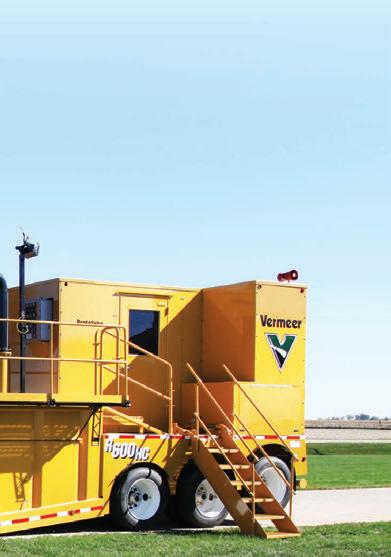


46 The Australian Pipeliner | March 2024
HDD
Vermeer’s R600HC Reclaimer’s integrated mixing hopper allows for simultaneous mixing and recycling within a single system.
Vermeer’s reclaimer range is designed to enhance job productivity and mitigate project delays.
Images: Vermeer Australia.
Vermeer’s reclaimer range is designed to enhance job productivity and mitigate project delays, with the R600HC equipped with telescoping lights for around-theclock operations.
The company’s R600HC Reclaimer offers contractors convenient single-side access and




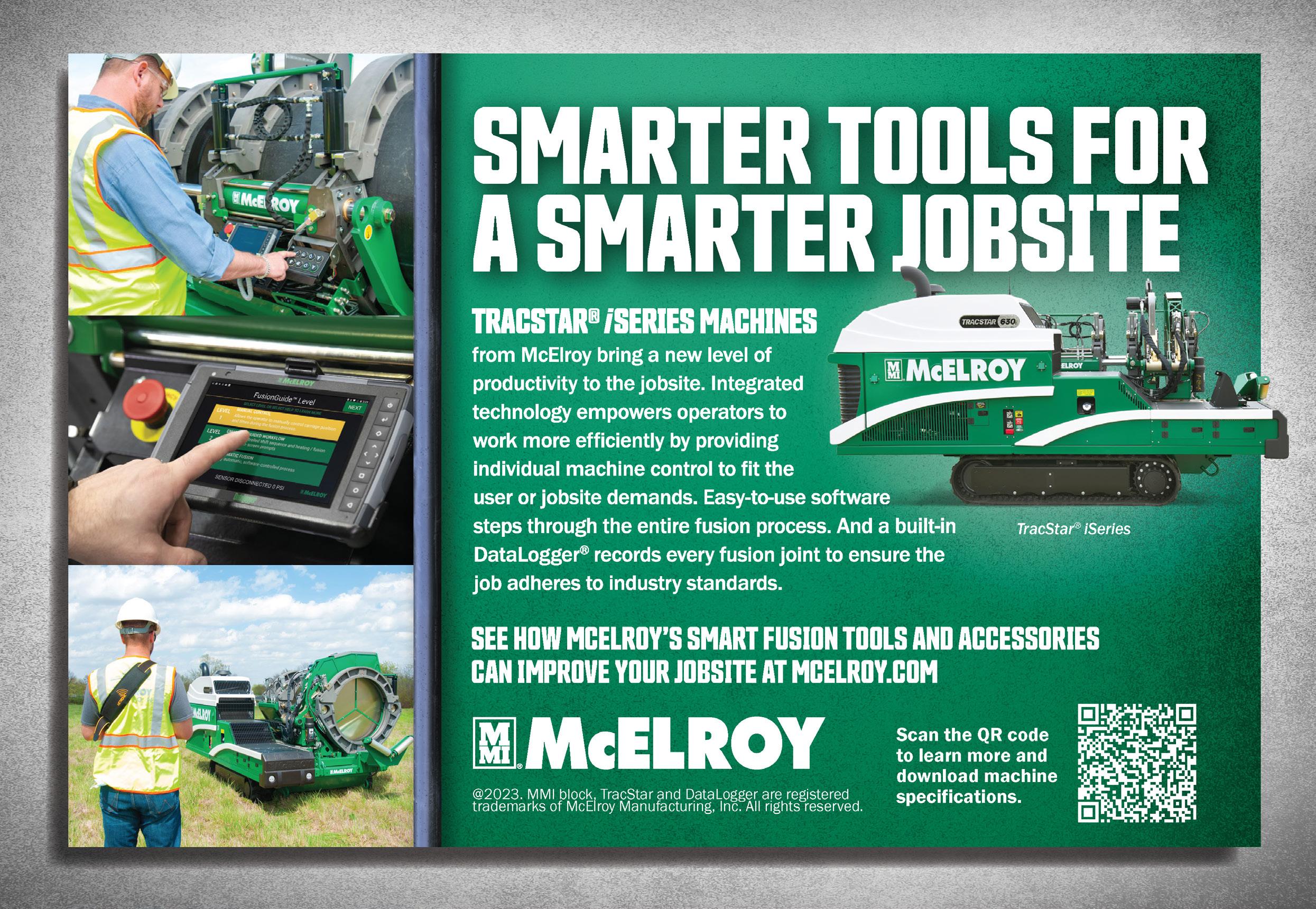
HDD
The 360-degree working deck provides multiple access points to the shaker deck which simplifies washing the screens and other daily activities.
A welding master on wheels
ArcPro Welding Services might not have been on the market for long, but the welding company has ignited sparks in the industry since its inception.
Created two years ago, ArcPro Welding Services has quickly positioned itself at the forefront of the piping industry.
Director, Welding Supervisor and Pressure Welder Cory Hill and Director Chantal Zander are the faces of the Queensland-based company.
“We started ArcPro Welding Services two years ago, we are a family owned and run business,” Zander said.
From pipe welding, structural steel, shutdown maintenance, general fabrication, welding supervision as well as welding procedure speci cation and quali cation, it seems like there is nothing the company can’t do.
“We custom built our welding truck to allow us the ability to go wherever the job may be and to have the ability to weld whatever material or process is required of us,” Hill said.
Specialising in commercial construction, pipelines, oil and gas, power stations and maintenance sectors, ArcPro Welding’s seasoned professionals excel in various welding processes and are able to put industrial-level quality into your project without sacri cing customer care or consultation.
“Quality Matters” is the motto at ArcPro
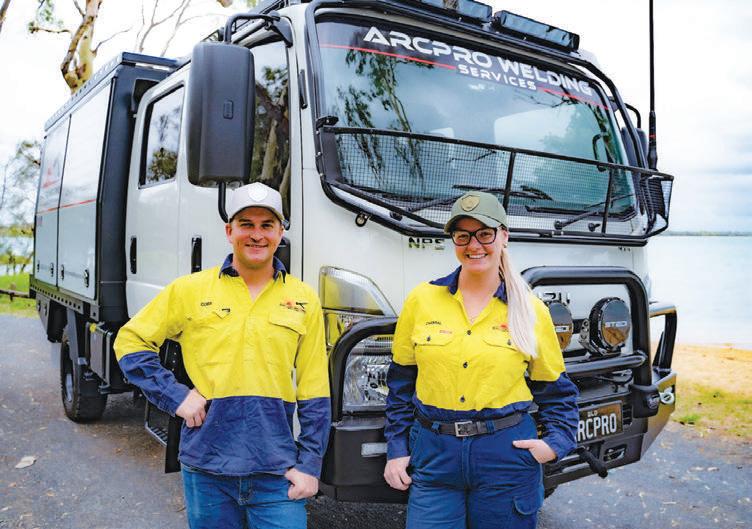
Welding, and rightly so,” Zander said.
“Our truck is quite literally a welding workshop on wheels with quick setup and pack up times.”
e company’s fully equipped welding truck
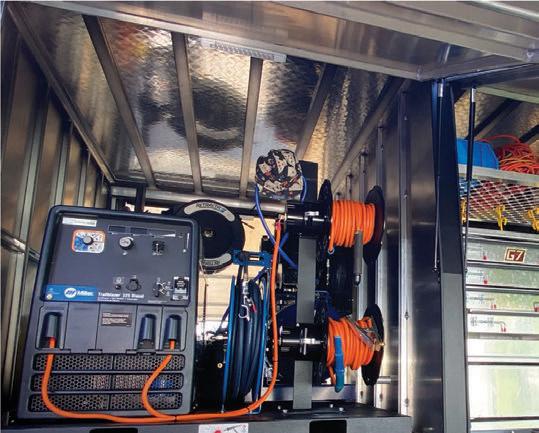


enables them to serve commercial projects not only locally to Toowoomba and Brisbane, but also throughout Queensland and Australia-wide.
During its time in the industry, ArcPro Welding has managed to leave an indelible imprint on the piping sector, and it is only the beginning.
With successful collaborations on major projects around Brisbane, Toowoomba and the Darling Downs, the ArcPro Welding team have built strong long-lasting relationships.
“We bring a passion for elevating the quality of workmanship in the industries we have dedicated years to,” Zander said.
“Con dence in our ability to deliver the highest quality, reliable, and e cient welding services sets us apart.”
Committed to a strong work ethic and industry compliance, the company guarantees honest, high-quality welding services.
“Our quali ed team continually develop skills, aiming to stay at the forefront of specialist welding techniques,” Hill said.
“We are focusing on driving our business towards pressure welding and pipeline welding.” Zander and Hill’s drive to making ArcPro Welding Services an industry-leader hasn’t gone unnoticed."
48 The Australian Pipeliner | March 2024 For more information, visit arcprowelding.com.au
WELDING Images: ArcPro Welding
Services.
Cory Hill and Chantal Zander stand proud in front of their custom-built welding truck.
ArcPro Welding Services brings the workshop directly to your project.









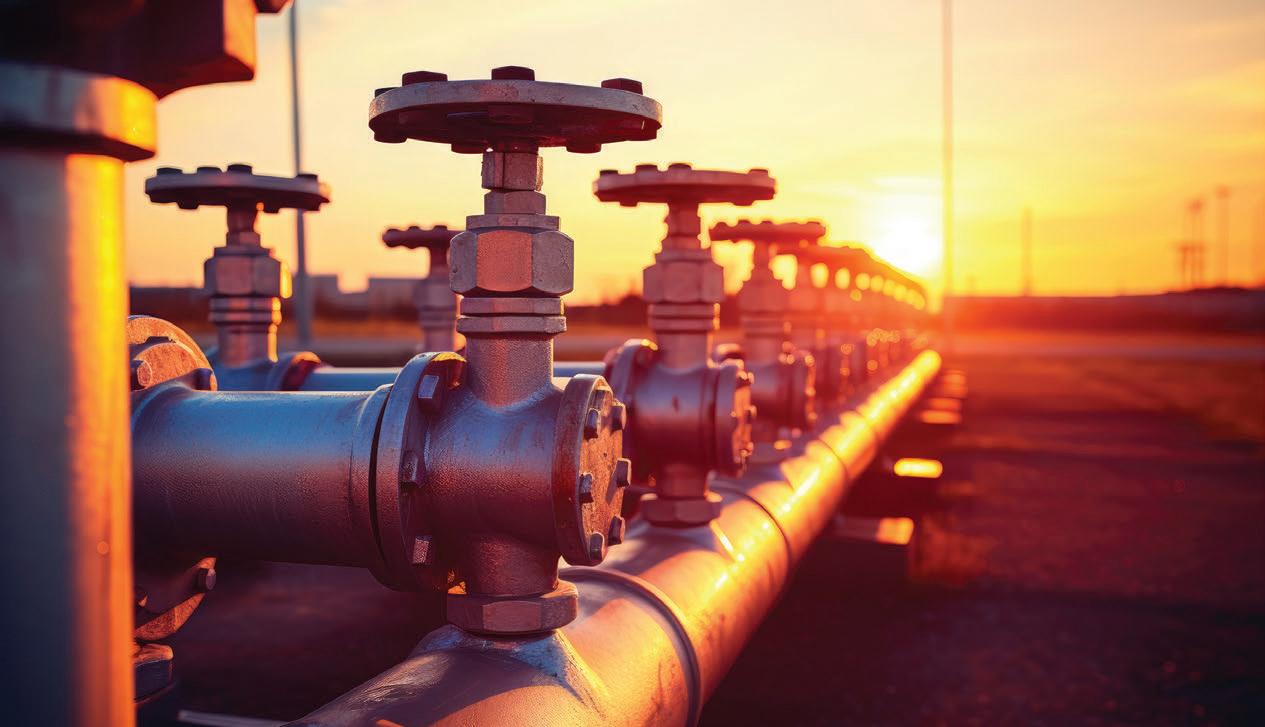















SILVER SPONSORS INDUSTRY PARTNERS MEDIA PARTNER WWW.PNGEXPO.COM The Stanley Hotel, Port Moresby, Papua New Guinea 3-4 JULY 2024
SPACES ON SALE NOW Learn more Secure your business as a leading supplier to the growing PNG mining sector GROWING resources sectors while supporting infrastructure through strategic CONNECTIONS PNG's mining and
EXHIBITION
A stand-out pipeline solution
TFG Group has launched the Type B Repair Sleeve, an Australian-made repair sleeve speci cally tailored to meet the AS2885 certi cation.

TFG Group, in a continued pursuit of excellence, identi ed a unique market opportunity by recognising the demand for an Australian-manufactured Type B Repair Sleeve.
Historically, the market o ered only ASME B31.8 and ASME PPC-2 sleeves, which fell short in supporting the overall integrity of the pipeline.
is led a prominent Australian pipeline operator to collaborate with TFG Group to design a AS2885 certi ed pipeline solution.
TFG Group Managing Director Justin Anderson said by bringing together engineering expertise, industry knowledge, and a commitment to excellence, this partnership resulted in a product that not only meets but exceeds the expectations of clients and industry standards.
“ is tailored approach caters speci cally to the unique needs of the Australian and New Zealand markets and addresses nuances that generic alternatives may overlook,” he said.
is innovation marks a turning point, providing clients with a solution that not only complies with both Australian and international standards but also resonates with the local industry's speci c needs.
“I’m incredibly proud of our oil and gas team for committing to an Australian-designed
and certi ed Type B Repair Sleeve,” Anderson said.
Before TFG Group’s Type B Repair Sleeve made its rst appearance on the market, the prevalent availability of ASME B31.8 and ASME PPC-2 sleeves lacked the tailored approach required for the nuances of the Australian and New Zealand oil and gas sector.
e company’s proactive stance in addressing this issue is a re ection of its commitment to pioneering solutions that enhance the industry's overall integrity.
To attain AS2885 certi cation, the engineering, testing, and certi cation process follows a meticulous path, ensuring the highest quality and compliance.
e certi cation process encompassed three major steps:
• Comprehensive engineering: TFG Group employed a thorough engineering approach, ensuring every aspect of the Type B Repair Sleeves complies with AS2885 standards.
• Rigorous testing: Stringent testing procedures guaranteed the durability and performance of the repair sleeves under real-world conditions.
• Certi cation assurance: e certi cation process involved meticulous scrutiny, con rming that the product meets the stringent criteria set by AS2885 standards.
“ e AS2885 certi cation signi es a

commitment from TFG Group to the industry for our solutions-oriented approach backed by robust engineering to improve overall integrity of Australia’s pipeline systems,” he said.
When it comes to Type B Repair Sleeves, the AS2885 certi cation provides a spectrum of advantages, instilling con dence in clients and setting a brand new benchmark for unparallaled industry excellence.
Local compliance is a priority for TFG and with the design being AS2885-certi ed it aligns seamlessly with Australian standards, facilitating e ortless integration within the domestic oil and gas sector.
e product also bene ts from an enhanced reliability. TFG’s commitment to robust engineering, re ected in the AS2885 certi cation, ensures that these repair sleeves not only meet but exceed industry expectations for reliability.
Client con dence is at the point of focus of TFG. Utilising AS2885 standards instils con dence in clients, assuring them of a product designed to the highest industry benchmarks, fostering trust and reliability in their pipeline systems.
TFG Group’s AS2558 Type B Repair Sleeves are available for installation by TFG Groups’ specialised team of in-service welders and technicians.
50 The Australian Pipeliner | March 2024 For more information, visit tfggroup.com.au
WELDING
Images: TFG Group.
Type B Repair Sleeves at TFG’s Yatala QLD Workshop.
Standard repair sleeve installation in NSW.
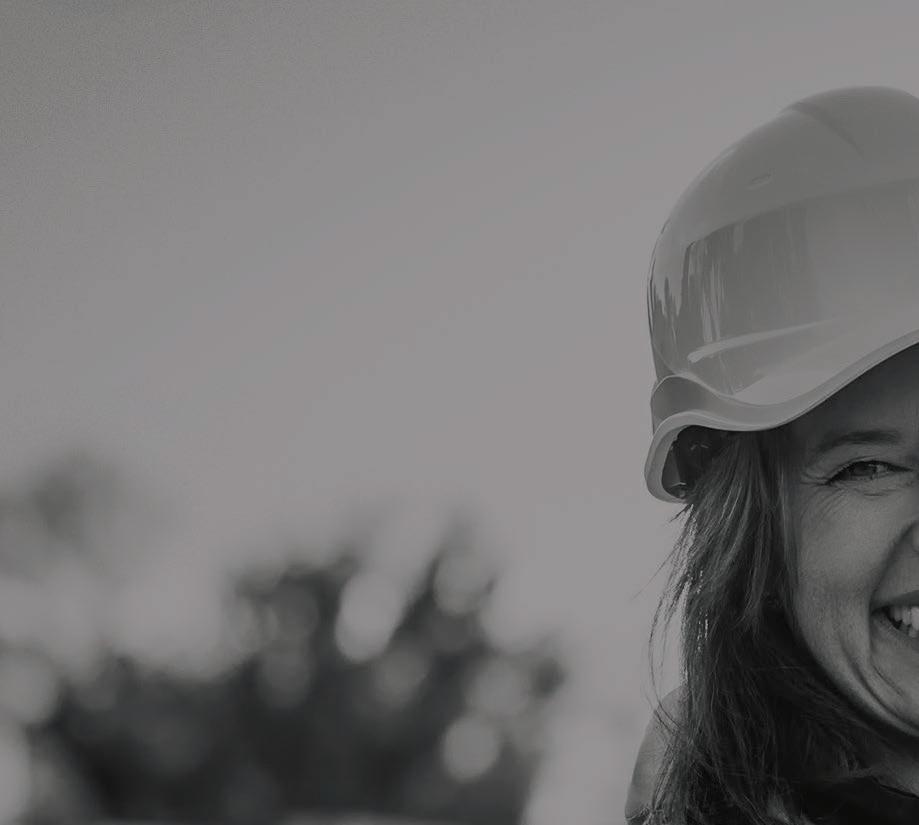

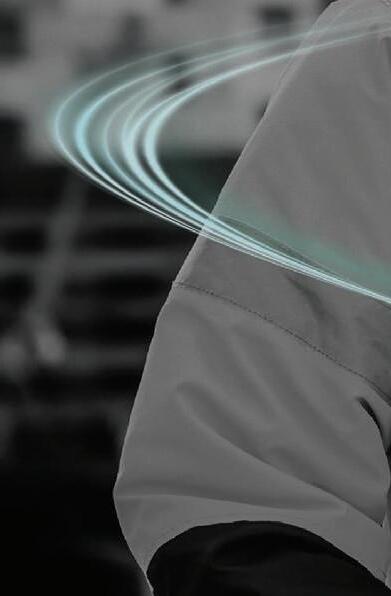




The Women in Industry Awards recognise outstanding women leaders from across Australia’s industrials sector. WOMEN IN INDUSTRY NOMINATIONS ARE NOW OPEN. Now is your chance to nominate an industry leader who you believe is advocating for positive change and deserves to be recognised. Thurs 20 June, 2024
womeninindustry.com.au PROUDLY SUPPORTED BY Australia PROUDLY PRESENTED BY MHD Supply Chain Solutions DO YOU
DRIVER OF CHANGE?
KNOW A

Developing opportunities to improve the energy transition
ROSEN Group is supporting National Gas with understanding how to extend asset lifetime and capability in the energy transition.
As the world looks to reduce its carbon emissions, the oil and gas industry is faced with the dilemma of resolving this in parallel to the continued increase in global demand for fuel and energy.
With renewable hydrogen identi ed as a exible energy carrier, existing gas infrastructure o ers the potential conditions for storing, transporting, and distributing this ‘clean energy’.
Understanding the e ects of hydrogen on pipeline materials is vital in determining potential asset lifetimes, understanding potential issues, and determining safe operating conditions.
As part of ROSEN’s hydrogen research project, the company will utilise its newly developed materials testing laboratory. is facility is dedicated to testing under hydrogen

52 The Australian Pipeliner | March 2024
ENERGY TRANSITION
Images: ROSEN Group.
ROSEN researchers at work.
The goal of this research is to understand the impact of hydrogen on steel pipelines and how it may be mitigated.
conditions to understand the conversion of existing pipeline infrastructure to transport hydrogen or blended mediums in the energy transition.
e facility was built by ROSEN in Lingen, Germany, and is fully equipped to conduct extensive testing and is supported by a team of materials and pipeline integrity experts that are on hand to analyse the results of the tests that are carried out.
It serves as a critical element in ROSEN’s ambitious mission to de-risk the introduction of renewable fuels and help operators by assuring a safe and reliable future energy supply.
ROSEN and National Gas are working together to understand and mitigate the potential challenges in transporting hydrogen, including the potential for limitations in operational parameters and asset lifetime.
“ e goal of this research is to understand the impact of hydrogen on steel pipelines and how it may be mitigated. Several studies have shown that oxygen may reduce the e ects of hydrogen,”
ROSEN Principal Engineer Neil Gallon said.
“ROSEN Group looks forward to working together with National Gas and its partners to further improve the understanding of hydrogen and its e ects on materials.
“Together, we will enable National Gas to continue to play its leading role in the introduction of hydrogen into the UK National Transmission System.”
e research project set to be completed this year, the project promises to deliver fracture and fatigue property tests to provide insight into how di erent quantities of oxygen in a hydrogen gas ow can prevent permeation into the network materials.
National Gas Head of Innovation Corinna Jones said the two companies have built a strong rapport.
“We have built a strong rapport with ROSEN over the years, given their experience of developing innovative and novel solutions," Jones said.
“We are con dent that this initiative will
result in an optimised approach to transporting hydrogen across the NTS.”
ROSEN is also researching how the design and execution of a test program will quantify the e ects of oxygen on di erent materials. e company supports pipeline operators in the change process to extend the lifetime of their valuable assets.
“An integrated hydrogen integrity framework coupled with a phased approach enables pipeline operators to make smarter decisions when converting their existing gas grids to hydrogen and ensures hydrogen transport operations that are reliable in all aspects of performance, safety and security,” ROSEN Head of Business Line Hydrogen Marion Erdelen-Peppler said.
Since its origins as a one-man business in 1981, ROSEN has rapidly grown and continues to do so.
Today, the business is privately owned and consists of a team of more than 4000 employees operating in more than 120 countries.

For more information, visit rosen-group.com
ENERGY TRANSITION 53 The Australian Pipeliner | March 2024
This research is the fruit of a strong rapport and collaboration between ROSEN and National Gas.
Pragmatism over populism will be essential to success in the energy transition
APGA Chief Executive O cer Steve Davies shares why the Australian Federal Government’s rejection of environmental approvals for the Victorian Renewable Energy Terminal is a signi cant obstacle in the nation’s push towards renewable energy.

Reliance on energy predictive models should not overshadow practical considerations and tangible evidence.
This decision has a big impact on Victoria’s ambitious goal of achieving 95 per cent renewable electricity by 2035 and adds even more pressure to the Federal Government’s target of 82 per cent by 2030.
e challenges faced in Victoria are not isolated but re ect a broader trend in Australia’s energy transition. Across the country, big projects and signi cant plans are encountering obstacles.
From community opposition to the construction of electricity transmission lines to geological issues such as the soft soil at the Snowy Hydro 2.0 project and the need for careful consideration of cultural heritage sites for undersea pipelines, these complications are increasingly seen as the norm rather than exceptions.
e core of these challenges lies in the reliance on modelling to plan the energy transition.
Predictive models, although useful, require extensive inputs and assumptions. e Australian Energy Market Operator’s (AEMO) Integrated Systems Plan is a case in point.
e 2024 draft plan projected 2 gigawatts (GW) of o shore wind power to come online by 2030. However, these models failed to account for potential environmental concerns, such as the implications of dredging a declared Ramsar wetland.
ese critical oversights have a signi cant impact on the transition, on electricity reliability and security, and most importantly, on energy bills.
It has already manifested through the Victorian government signing con dential deals to prevent the early closure of brown coal generation, while the New South Wales Government negotiates an extension for the operation of the Eraring coal- red power station.
is reliance on models – where announcements evolve into plans, then assumptions, and nally ‘known’ outcomes – often overlooks real-world complexities. Models typically predict smooth progress, yet they fall short in anticipating complications.
Recent years have shown the dangers of this overreliance as projects frequently do not proceed as planned because of community resistance and supply chain challenges.
Illogical approach
As modelling fails time and again, the Victorian Government’s approach to phasing out natural gas, based on awed emissions and cost forecasts, is illogical. Natural gas, although not a forever solution, is a critical transitional energy source. e need to develop and deliver reliable, sustainable, and cost-e ective alternatives before signi cantly reducing gas usage cannot be overstated. e journey to net zero is often compared to rebuilding an aeroplane while in midair. e rst priority cannot be to take the wings o , lest the social licence of the energy transition goes into freefall.
But the good news is there is already a road map to support o shore wind and get o coal.
e UK leaned heavily on natural gas to rapidly reduce coal generation and emissions, while prioritising the build-out of its nascent o shore wind industry.
Between 2012 and 2017, this road map led to an 85 per cent decrease in coal generation and a more than 52 per cent reduction in emissions, with an accompanying 5 per cent drop in the overall price per megawatt hour (MWh). During this period, there was also a signi cant increase in the UK’s o shore wind capacity, from 2.9GW in 2012 to 6.9GW in 2017, reaching 13GW today.
As Australia moves towards its 2030 and 2035 energy targets, it is imperative to recognise and plan for the inevitability of complications. e gas sector, with its extensive infrastructure and capacity for
exible response to energy demands, must be a key component to help manage these challenges.
Triumph of populism over pragmatism
e exemption of gas from the Capacity Investment Scheme is a triumph of populism over pragmatism. Its potential inclusion provides a bu er against unforeseen demands and complications arising in the energy system, including inde nite delays in o shore wind generation coming online.
It also signi cantly distorts the risk/reward pro le of all energy investments. ere is unanimous agreement on the necessity of new gas peakers but no incentive for them to be delivered. is exclusion of gas creates a two-tiered energy system where project prioritisation isn’t based on need.
e recent draft Integrated System Plan, which did not account for delays in o shore wind, revealed that Australia required the equivalent of 17 new Hunter Power Projects for the National Electricity Market to remain reliable in a net-zero future. is generation must be brought forward, alongside renewable projects, to ensure Australia can get o coal as quickly as possible without the lights going out.
Opponents of gas argue that its continued use commits the nation to decades of increased emissions. However, the sector is undergoing its decarbonisation journey.
Innovations in biomethane and hydrogen are poised to replace much of the current natural gas usage. e global shift towards cleaner alternatives is already under way, and the gas infrastructure sector is leading the charge.
e lesson here is clear: reliance on predictive models, although valuable for planning, should not overshadow practical considerations and real-world evidence. Understanding and adapting to the complexities of the energy transition requires a balanced approach that includes innovative modelling and pragmatic solutions.
We know Australia’s energy transition is a complex and multifaceted endeavour. e challenges faced in Victoria and across the nation highlight the need for an adaptable and rational approach.
But rst, we must stop the over-reliance on what models tell us and start paying attention to reality.
54 The Australian Pipeliner | March 2024
ENERGY TRANSITION
Image: bilanol/stock.adobe.com.
e crucial role of submitting papers to industry
A paper submission equals a gateway to innovation, collaboration, and professional advancement, while seizing opportunities for impactful contribution and long-term growth.

In the ever-evolving landscape of industry, the call for papers has emerged as a powerful conduit for professionals to make their mark, share insights, and shape the trajectory of their respective elds. is article explores in depth the pivotal importance of answering a call for papers within the industry, elucidating how this seemingly simple act can catalyse innovation, foster collaboration, elevate individuals in their professional journey, and contribute to the broader advancement of entire sectors.
Showcasing expertise and thought leadership
Submitting papers to industry conferences is not merely about disseminating information; it's a strategic move to showcase expertise and establish a presence as a thought leader in a speci c domain.
is platform provides an unparalleled opportunity to articulate innovative solutions, share best practices, and contribute unique perspectives that can in uence industry narratives. By consistently answering calls for papers, professionals position themselves at the forefront of their eld, gaining recognition among peers, potential collaborators, and decision-makers.
Driving business innovation: A collective endeavor
e APGA Convention serves as a hub of

innovation, drawing professionals from diverse backgrounds to exchange ideas, stay abreast of the latest trends, and collectively shape the future of their industries.
By responding to calls for papers, individuals become active contributors to this dynamic exchange. Sharing insights, case studies, and success stories not only inspires others but also fosters a culture of continuous improvement, pushing the boundaries of what is achievable within the industry. is collective e ort toward innovation sets the stage for transformative advancements that ripple across entire sectors.
Networking for professional growth: Building relationships beyond the papers
Participating in industry events through paper submissions is not just about presenting ndings; it's about forging meaningful connections. Networking with fellow professionals, industry leaders, and potential collaborators during conferences is invaluable for career advancement. e relationships formed in these settings often extend beyond the con nes of the paper, leading to collaborative projects, mentorship opportunities, and exposure to new prospects.
Elevating industry standards: A responsibility and opportunity
Submitting papers to industry conferences isn't just a personal or professional achievement; it's a

responsibility to contribute to the establishment and enhancement of industry standards. By sharing insights, experiences, and lessons learned, individuals play a direct role in shaping the benchmarks that guide their industry. is commitment to elevating standards not only enhances the individual's professional standing but also contributes to the collective progress of the entire sector. Answering a call for papers, therefore, becomes a dual opportunity— to showcase personal expertise and to actively participate in the shaping of industry norms.
Showcasing practical solutions: Beyond theory to tangible impact
While academic research is undoubtedly valuable, industry-focused papers hold a unique advantage in their practical applicability. Answering a call for papers provides a platform to showcase real-world solutions, best practices, and case studies that resonate with industry professionals facing day-to-day challenges. is emphasis on practicality makes such submissions invaluable for driving tangible improvements in processes, technologies, and methodologies. Professionals, through their contributions, not only share theoretical insights but also demonstrate how these insights can be translated into actionable strategies, thereby making a direct impact on the industry's operational landscape.
Entries close 31 March 2024.
55 The Australian Pipeliner | March 2024 To answer the APGA call to papers, visit apga.org.au
APGA CONVENTION
Image: Janvier/stock.adobe.com.
The APGA is urging pipeline professionals to answer its call for papers ahead of the APGA Convention and Exhibition.
Australian Pipelines and Gas Association Membership
CONSTRUCTION CONTRACTOR
Alltype Engineering
Altrad Services Pty Ltd
Enscope Pty Ltd
Global Engineering & Construction Pty Ltd
HH Civil Pty Ltd
Maxibor Australia
McConnell Dowell Constructors (Aust) Pty Ltd
Michels Corporation
Mitchell Water Australia Pty Ltd
Moody Civil & Pipe Pty Ltd
MPC Kinetic
Nacap Pty Ltd
National Australian Pipelines
P and G Welding Pty Ltd
Pipecraft
Pipeline Plant Hire Pty Ltd
Quanta Services Australia Pty Ltd
Service Stream
Spiecapag Australia Pty Ltd
Steel Diamond
CONSULTANT
ACIL Allen Consulting
Australasian Corrosion Consultants Pty Ltd
CNC Project Management
DNV GL Australia Pty Limited
Energy Matrix Group Pty Ltd
EnergyQuest Pty Ltd
Fortin Pipelines
Future-Proof Solutions
Jiva Consulting
JLL Infrastructure Advisory Pty Ltd
Land Access & Management Services Pty
Ltd
MVC Services Pty Ltd
OC Project Services Pty Ltd
Pipeline Engineering Consultants
Plant & Platform Consultants Ltd
Sage Consulting Solutions Pty Ltd
Sustech Engineering Pty Ltd
Ted Metcalfe Independent Consultant
Twycross and Partners Pty Ltd
Veris
ENERGY DISTRIBUTOR
ATCO Gas Australia
Powerco Limited
ENGINEERING/PROJECT MANAGER
A J Stack Solutions Pty Ltd
AFS Projects
Atteris Pty Ltd
Auscor Pty Ltd
Bamser Holdings Pty Ltd
CORPORATE MEMBERS
Core Group Limited
Fyfe
GHD Pty Ltd
GPA Engineering Pty Ltd
Lidiar Group
Long Energy and Resources (Aust.) Pty Ltd
Momentum Engineering
Pipeline Drillers Group
Solarig Australia Pty Ltd
SPIE Plexal
Vaughan Civil Pty Ltd
Verbrec Ltd (ASX: VBR)
Worley Services Pty Ltd
GOVERNMENT DEPARTMENTS/ REGULATORS
Department for Energy and Mining
Department of Planning and Environment
NSW
Energy Safe Victoria
Resources Safety and Health Queensland
INDUSTRY ASSOCIATION
Pipeline Research Council International, Inc
PIPELINE OWNER/OPERATOR
Ampol Australia Petroleum Pty Ltd
APA Group
Arrow Energy Pty Ltd
AusNet Services
Australian Energy Market Operator
Australian Gas Infrastructure Group
Brook eld Infrastructure Group
Channel Infrastructure NZ
Epic Energy SA Pty Ltd
Esso Australia Pty Ltd
First Gas Ltd
Fortescue Future Industries Pty Ltd
GB Energy
Jemena
Methanex NZ Ltd
Mobil New Zealand Oil Limited
Mobil Oil Australia Pty Ltd
Origin Energy Limited
Power and Water Corporation
PowerGas Limited
Qenos Pty Ltd
Santos Ltd
SEA Gas
South Australian Water Corporation
Tas Gas Holdings Pty Ltd
Tasmanian Gas Pipeline Pty Ltd
Vector Limited
Viva Energy Australia Ltd
Woodside Energy Ltd
Supplier of Equipment or Materials
Field Machine Tools Pty Ltd - CMB - Bryan Law
SERVICE PROVIDER
Atlas Copco Rental Oceania
Avmin Pty Ltd
AXS Pty Ltd
Baker Hughes
Brooks Hire Service Pty Ltd
Brownline Australia Pty Ltd
Bureau Veritas Asset Integrity and Reliability
Services Pty Ltd
Corrosion Control Engineering (Holdings) Pty
Limited
Deaton Enterprises Pty Ltd trading as CST
Hire
Downer EDI Engineering Power Pty Ltd
DSQ Pty Ltd
ERIAS Group Pty Ltd
IntelliGas
ITI International
Kent
LandPartners Pty Ltd
Lochard Energy (Iona Operations) Pty Ltd
Mipela GeoSolutions
NDT Global Pty Ltd
Oceaneering Australia Pty Limited
ORIX Commercial
Peter Norman Personnel Pty Ltd
Picarro, Inc
Pipe Tek Pty Ltd
Piping Specialty Supply Service Pty Ltd
Prime Creative Media
Pro Pipe Services Pty Ltd
Project Communications Australia
QIC Protective Coatings (Aust) Pty Ltd
Qube Energy Pty Ltd
Red Rock Oil eld Services
Rogers Energy Services
ROSEN Australia Pty Ltd
Scape Consulting Pty Ltd
SRG Global
STATS Group
T D Williamson Australia Pty Ltd
TFG Group Pty Ltd
Turbo Systems Australia Pty Ltd
Vertech Group Pty Ltd
Viega Pty Ltd
Wasco Energy Group
WRAP Resources Australia
Zinfra
SUPPLIER OF EQUIPMENT OR MATERIALS
Aegis Pty Ltd
Anode Engineering Pty Ltd
Anti Corrosion Technology Pty Ltd
Aquip Systems
Service Provider Kent - CMBR - Brad Triston Triston
INDIVIDUAL MEMBERS
Paul Beukelman
Daniel De Vere
AtlasGas Pty Ltd
Austrack Equipment Sales and Rentals
Australian Pipeline Valve
Australian Portable Camps
Bao Australia Pty Ltd
CRC-Evans Pipeline International
Delnorth Pty Ltd
Denso (Australia) Pty Ltd
EagleBurgmann Australasia Pty Ltd
EDMI Pty Ltd
FPK (FERRET INDUSTRIES)
Gasco Pty Ltd
GF Piping Systems
Heath Pipeline Services Pty Ltd
Herrenknecht AG
Inductabend Pty Ltd
iPipe Services
Iplex Pipelines Australia Pty Ltd
Jindal Saw Limited
LFF Australia
Lincoln Electric Company (Australia) Pty Ltd
Man Industries India Ltd
Marubeni-Itochu Tubulars Oceania Pty Ltd.
McElroy Australia
Ozzies, Inc.
PAC
Paci c Valve Tech & Engineering Pty Ltd
Pipeline Equipment Rentals
Pipeline Machinery International LP
Pipeline Supplies Australia
PipeServ
PSAH Pty Ltd
RazValve Paci c
RDO Equipment Pty Ltd
Richmond
RTi Asia Paci c PTY LTD
Savcor Products Australia Pty Ltd
Scapeworks Australia
Shawcor Pty Ltd
SICK Pty Ltd
Solar Turbines Australia
Tapex Industrial
Techrite Controls Pty Ltd
TRACTO-TECHNIK Australia Pty Ltd
Tremco Pipeline Equipment Pty Ltd
Universal Corrosion Coatings Pty Ltd
Vacuworx Australia
Vinidex Pty Ltd
Vlentec Australia Pty Ltd
Welspun Corp Limited
Western Process Controls
Worldwide Group
Future Fuels CRC
APGA MEMBERSHIP
56 The Australian Pipeliner | March 2024
APGA New Membership Approvals
APGA
would particularly like to acknowledge the generous support of its Owner Members
• APA Group
• Australian Gas Infrastructure Group
APGA
• Epic Energy SA Pty Ltd
• Jemena
• SEA Gas
• Tasmanian Gas Pipeline Pty Ltd
would also like to acknowledge the strong support of its
• Australian Portable Camps
• Esso Australia Pty Ltd
• McConnell Dowell Constructors (Aust) Pty Ltd
• MPC Kinetic
• Nacap Pty Ltd
Honorary Life Members
• Ken Barker
• David Curry
• Keith Fitzgerald*
• D C Gore*
• Robert Gration
• Max Kimber
• Andy Lukas
• Tony Marletta
• Mick McCormack
• Stuart McDonald
• Jim McDonald*
• Allan Newham
Individual Members
• Dean Barker
• Paul Beukelman
• John Blain
• Bevan Boocock
• Grant Bowley
• Stephen Callaghan
• Ken Cameron
• Chris Carter
• Mark Cooper
• Geo Cope
• John de Robillard
• Daniel De Vere
• Amy Farrugia
• Gretchen Gagel
• Chris Gatehouse
• Graeme Hogarth
Employee Members
• Eric Bardy
• Geo Barton
• Lauren Beynon
• Rick Boreham
• Andrew Bourke
• Liz Brierley
• Peter Bucki
• Francis Carroll
• Philip Colvin
• Vera Corso
• Anne-Maree Corson
• Craig de Laine
• Edwin De Prinse
• Mark Dragar
• Yuyu Fang
• Daniel Faulkner
• Matt Felvus
• Sean Fleming
• Nick Flint
• Tom Forde
• Mark Fothergill
• Paul Frederick
• Tess Gardener
• Jarrod Gilby
• Calvin Gordon
• Peter Hanily
• Geo Harrison
LeadMembers
• QGC
• Quanta Services Australia Pty Ltd
• Solar Turbines Australia
• Spiecapag Australia Pty Ltd
• Worley Services Pty Ltd
• Lynndon Harnell
• Mark Harris
• Chris Harvey
• Justine Hyams
• Je Jones
• Ashley Kellett
• Steven Liddell
• Cameron
• Stephen Ohl
• Mark Twycross
• Phil Venton *deceased
MacDiarmid
• James McMahon
• Trevor Nichols
• John Piper
• David Pollock
• Brett Reay
• Justin Sciortino
• Shaun Smith
• Ian Spence
• Jasper Tieland
• Andrew Wood
• Chris Hewson
• Ian Israelsohn
• Linda Johnson
• Hugo Kuhn
• Trent Leach
• David Levy
• Stephen Livens
• Nicole Lowndes
• Paul May
• John Messent
• Stephen Mudge
• Matthew O'Connell
• Wendy Oldham
• Brian O'Sullivan
• Neil Parry
• Tawake Rakai
• Ben Rees
• Darren Rogers
• Josh Row
• Craig Sheather
• James Smith
• Colin Symonds
• Soheil Taherian
• Warwick Tidswell
• Andrew Tsitas
• John Walsh
• Sean Ward
• Louise Watson
• Rob Wheals
• Paul Williamson
• Michael Xanthopoulos
APGA MEMBERSHIP
57 The Australian Pipeliner | March 2024
People on the Move
In this regular column, The Australian Pipeliner celebrates new appointments in Australia, New Zealand, Papua New Guinea, and the Pacific’s pipeline sector.

CRAIG HALL – COMMERCIAL ACCOUNT EXECUTIVE – NDT GLOBAL
Craig Hall has recently joined the NDT Global team as its Commercial Account Executive, for which he will be based in the United Kingdom. Hall is supporting the growth of the Australian and New Zealand markets along with India and Africa.

Talking about his new role, Hall loves “working with a great team, growing the NDT Global business, and having fun while we do this”.
It’s not Hall’s first rodeo in the field as he has worked in the in-line (ILI) inspection industry for over 35 years.
“I left ILI for one year, I missed it so much that I quickly decided to go back,” he said.
“In the 1980s British Gas was developing their ILI technology and they were looking for people near where I lived.
“The research and development side sounded very interesting, so I applied for the position and the rest is history.”
Hall said he feels lucky to have a job he loves that allows him to travel while meeting good friends.
JACOB NIEHUS – BUSINESS DEVELOPMENT MANAGER – THE AUSTRALIAN PIPELINER
Jacob Niehus has recently joined The Australian Pipeliner team as its Business Development Manager.
The magazine is, in Niehus’ words, “an industry specific publication with the sole objective to grow, develop and connect the pipeline industry”.
“It’s the voice of the industry and

Richard Singleton has joined Rezitech Services as a Technical Sales Consultant in southeast Queensland.
Formed in 1968, Rezitech offers the Belzona range of metal, rubber, and concrete repair products.
“The ISO and ASME compliant carbon fibre wrap system ‘Belzona SuperWrap II’ falls right into my area of
exists to promote the successes of the individuals and organisations within,” he said.
His new role revolves around managing the relationships with the magazine’s key partners to work strategically to achieve their marketing objectives.
Niehus is not new to the industry. During his career he has amassed
over a decade of exposure to the gas, heavy fabrication, engineering, and manufacturing industries.
“This role is about assisting in educating on best practice strategies that ultimately delivers best exposure to key decision makers and growing brand presence,” he said.
“I am looking forward to growing the publication.”
expertise within pipeline remediation,” Singleton said.
“The Rezitech team is already offering this to some of the major pipeline operators and I look forward to introducing the Belzona solutions to my broader network.
“We are all aware of tight operational budgets, but if we [Rezitech] can offer Belzona’s solutions, it may save expensive rebuild or replacement costs
from early involvement in the life of crucial production equipment.”
Singleton first joined the pipeline industry in 2011 and has been actively involved with many Australian Pipelines and Gas Association (APGA) members. In this new role, he will offer support across Queensland.
“This new opportunity has a local travel focus with less time at the mercy of the airlines,” Singleton said.
If your company has recently employed a new person within your business you would like profiled in ‘People on the Move’, send details of the career news alongside a high-res photo to Editor Clemence Carayol at clemence.carayol@primecreative.com.au
58 The Australian Pipeliner | March 2024 PEOPLE ON THE MOVE
RICHARD SINGLETON – TECHNICAL SALES CONSULTANT – REZITECH SERVICES

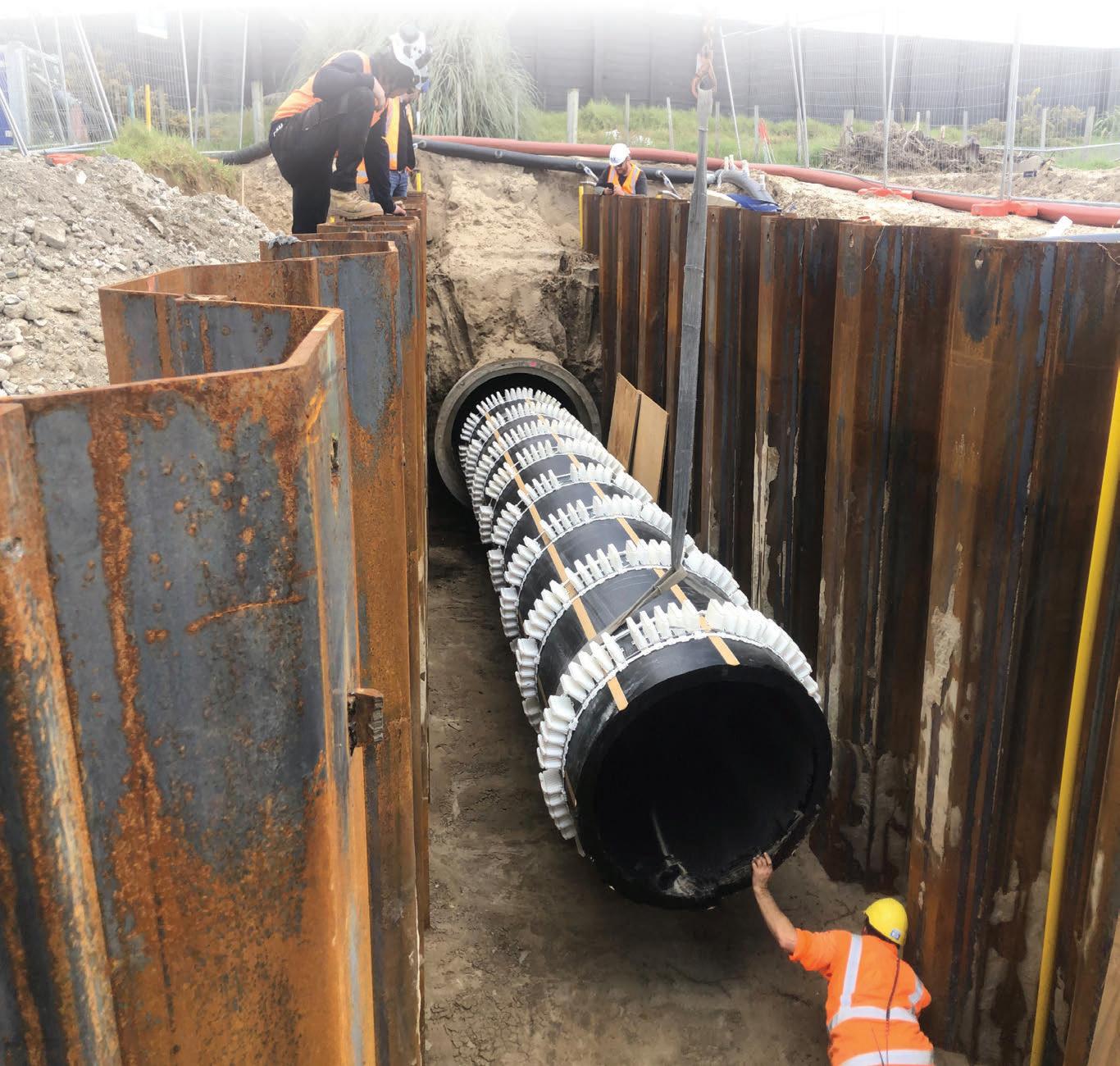

Is your pipe spacer compliant? Call us for details on ordering P (08) 9725 4678 sales@kwikzip.com www.kwikzip.com The only casing spacers successfully appraised by WSAA HDX and HDXT KWIK-ZIP’S HDX & HDXT CASING SPACERS COMPLY WITH WSAA PRODUCT SPEC #324 - CASING SPACERS; REFER WSAA PRODUCT APPRAISAL REPORT #1523
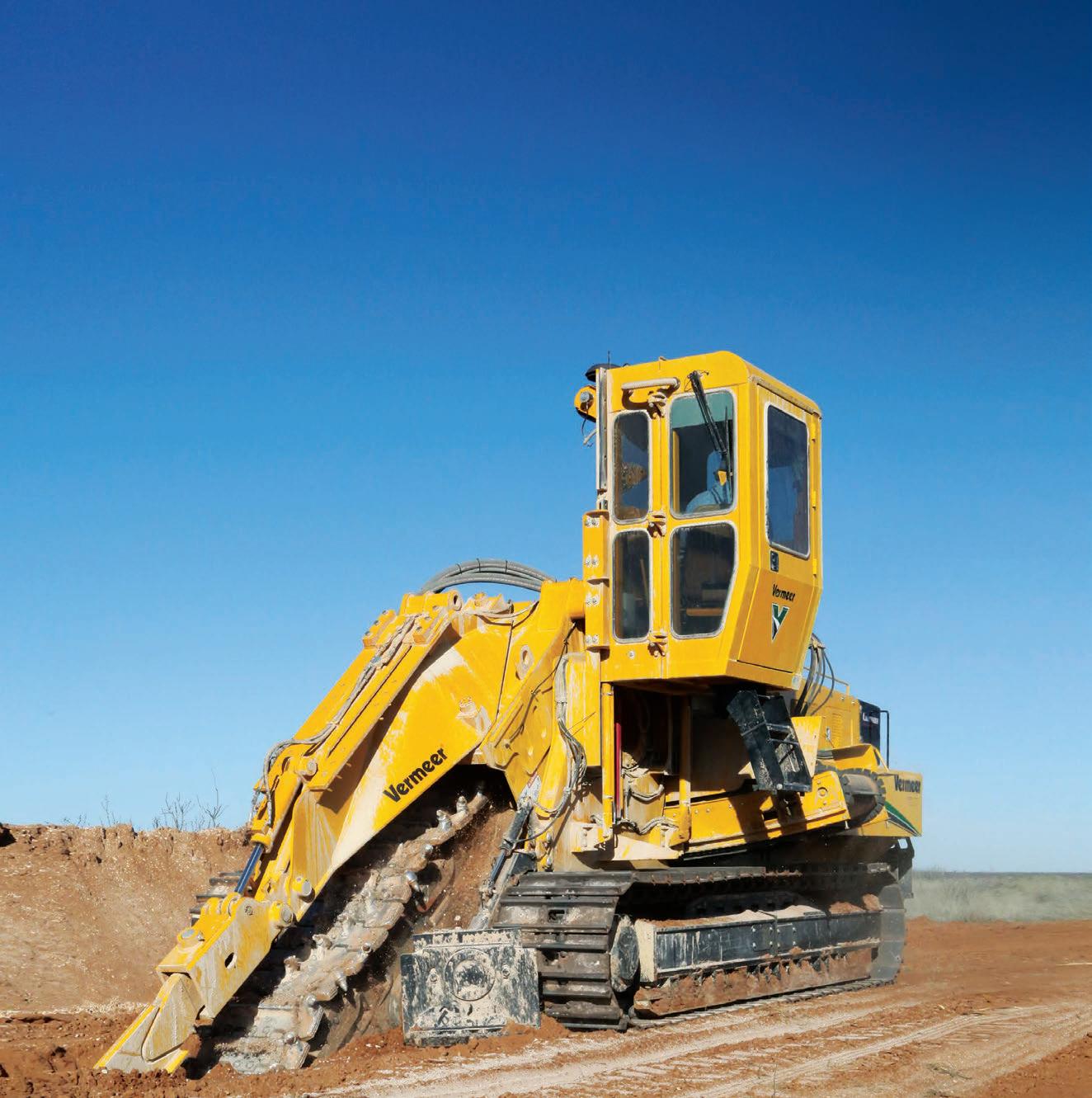

WORK SMARTER, NOT HARDER.


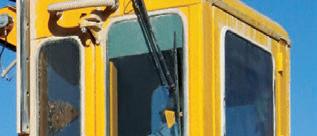
TECHNOLOGY SOLUTIONS FOR AUSTRALIA’S PIPELINE INSTALLATION.

SmartTEC Performance Software helps maximise machine performance by assisting operators with adjustments to machine controls during operation, and monitoring and recording machine performance, which can be analysed by the machine owner or eet manager. Contact your local Vermeer Australia team to learn how we can support your project.

VERMEERAUSTRALIA.COM.AU
VERMEER Vermeer and the Vermeer logo are trademarks of Vermeer Manufacturing Company in the United States and /or other countries. Product speci cations are subject to change by OEM. © 2024 RDO Equipment Pty Ltd (trading as Vermeer Australia). All Rights Reserved.
| 1300

































































































































































































































































































































































































































































